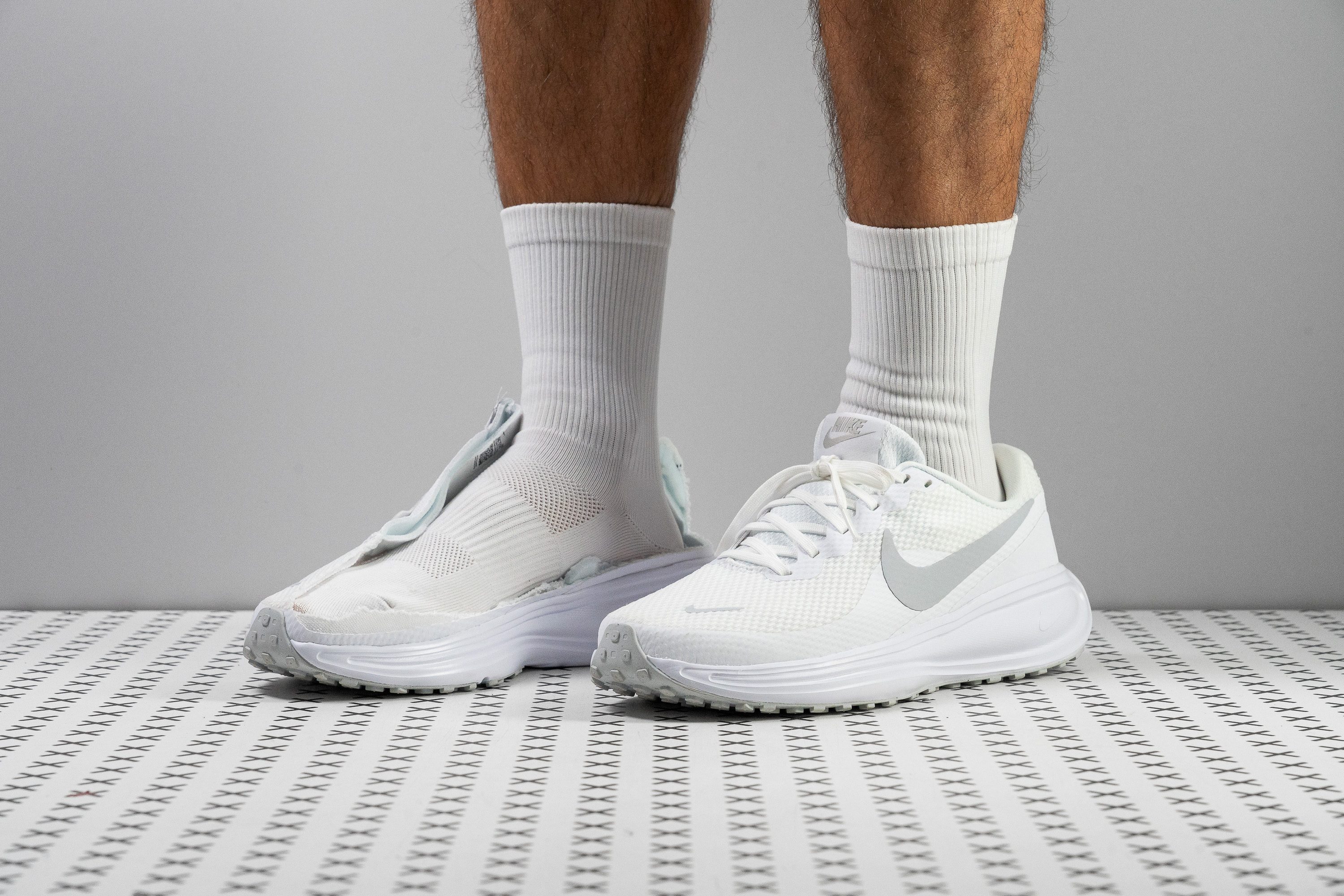Our verdict
Pros
- Improved energy return
- Affordable price with strong value
- Much lighter than version 7
- Trustworthy grip
- Solid durability
- Padded heel for extra comfort
- Flexible and comfortable for everyday use
- Ideal for heel strikers
- Keeps the same price despite upgrades
Cons
- Lacks forefoot cushioning
- Still a narrow fit
- Breathability is just moderate
Audience verdict
- Top 12% most popular running shoes
Comparison
The most similar running shoes compared
+ + Add a shoe | |||||
|---|---|---|---|---|---|
| Audience score | 78 Decent! | 81 Good! | 79 Good! | 77 Decent! | |
| Price | £60 | £90 | £65 | £65 | |
| Pace | Daily running | Daily running | Daily running | Daily running | |
| Shock absorption | Moderate | Low | Moderate | Moderate | |
| Energy return | Moderate | Low | Low | Low | |
| Traction | High | Moderate | Moderate | Moderate | |
| Arch support | Neutral | Neutral | Neutral | Neutral | |
| Weight lab Weight brand | 9.3 oz / 264g 9.5 oz / 270g | 10.5 oz / 298g 10.8 oz / 305g | 9.7 oz / 275g 9.7 oz / 275g | 9.3 oz / 265g 9.4 oz / 267g | |
| Drop lab Drop brand | 8.8 mm 10.0 mm | 8.6 mm 10.0 mm | 7.8 mm 8.0 mm | 10.1 mm 10.0 mm | |
| Strike pattern | HeelMid/forefoot | HeelMid/forefoot | Mid/forefoot | Heel | |
| Size | True to size | True to size | True to size | Slightly small | |
| Midsole softness | Balanced | Balanced | Balanced | Balanced | |
| Difference in midsole softness in cold | Normal | Big | Small | Small | |
| Toebox durability | Good | Decent | Bad | Decent | |
| Heel padding durability | Good | Decent | Good | Good | |
| Outsole durability | Decent | Decent | Decent | Good | |
| Breathability | Moderate | Moderate | Moderate | Moderate | |
| Width / fit | Medium | Medium | Medium | Medium | |
| Toebox width | Medium | Narrow | Medium | Medium | |
| Stiffness | Flexible | Moderate | Moderate | Moderate | |
| Torsional rigidity | Moderate | Stiff | Moderate | Moderate | |
| Heel counter stiffness | Stiff | Stiff | Stiff | Moderate | |
| Heel lab Heel brand | 31.8 mm 33.0 mm | 33.0 mm 34.0 mm | 31.2 mm 31.0 mm | 32.2 mm 32.0 mm | |
| Forefoot lab Forefoot brand | 23.0 mm 23.0 mm | 24.4 mm 24.0 mm | 23.4 mm 23.0 mm | 22.1 mm 22.0 mm | |
| Widths available | NormalWideX-Wide | Normal | NormalWideX-Wide | NarrowNormalWideX-Wide | |
| Orthotic friendly | ✓ | ✓ | ✓ | ✓ | |
| Season | All seasons | All seasons | All seasons | All seasons | |
| Removable insole | ✓ | ✓ | ✓ | ✓ | |
| Ranking | #330 Bottom 12% | #304 Bottom 18% | #324 Bottom 13% | #344 Bottom 8% | |
| Popularity | #44 Top 12% | #101 Top 27% | #78 Top 21% | #60 Top 16% |
Who should buy
The Nike Revolution 8 is a great choice for:
- Beginners buying their first running shoe who want something reliable, fun, and durable that also works for daily wear.
- Anyone who found earlier Revolution models too firm and low on bounce—this version solves it.
- Runners on a budget seeking a dependable shoe at a low price.
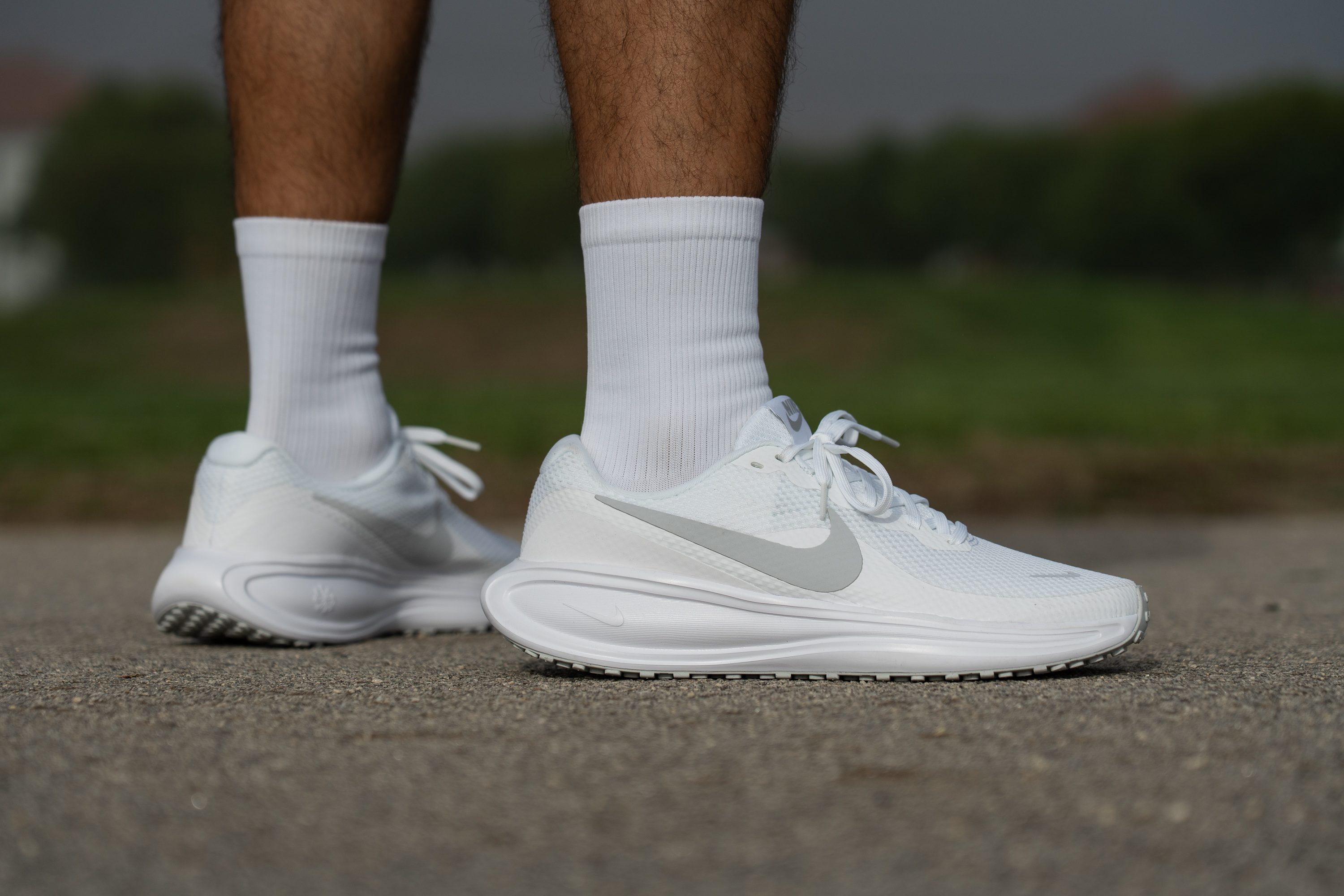
Who should NOT buy
We believe the Revolution 8 falls short for those seeking strong forefoot cushioning. We believe that heavier runners will likely find this area too thin and underwhelming, especially compared to options like the Nike Winflo 10 or New Balance Fresh Foam X Kaiha Road.
Additionally, we think this shoe isn’t suited for runners who want a plush ride. The midsole remains on the firmer side, which limits its appeal. From our lab data, the Brooks Revel 7 is a better low-cost alternative that delivers a softer feel underfoot.
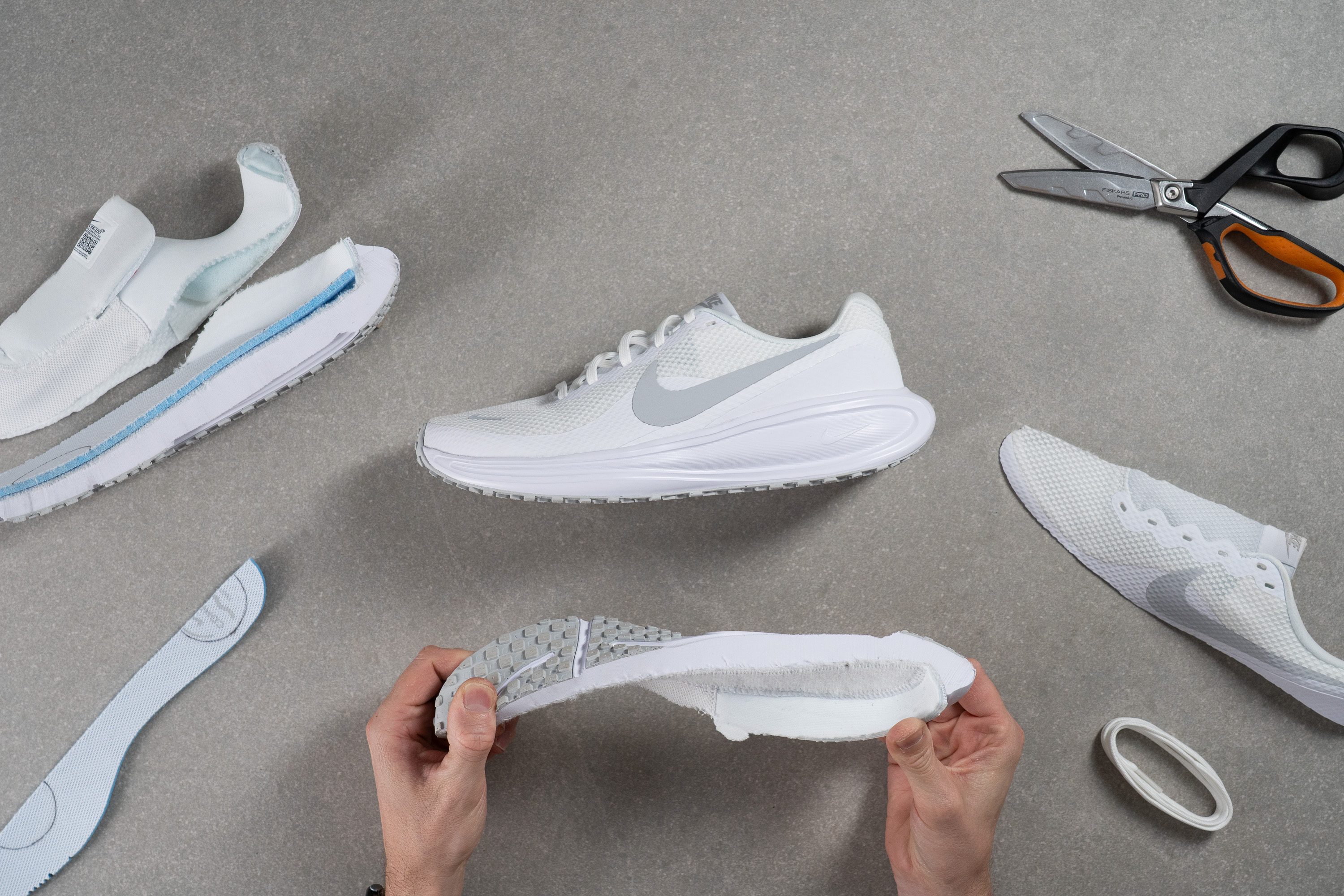
Cushioning
Shock absorption
Nike replaced the old Phylon foam with a new EVA compound in the Revolution 8. While this foam doesn’t yet have a fancy name, we found it delivers far better shock absorption.
How much better? The previous version scored only 98 SA in the heel, while this update hit 120 SA—a very strong result for a budget-friendly running shoe. On the other hand, the forefoot stays modest at 82 SA, confirming that this model is clearly aimed at heel strikers.
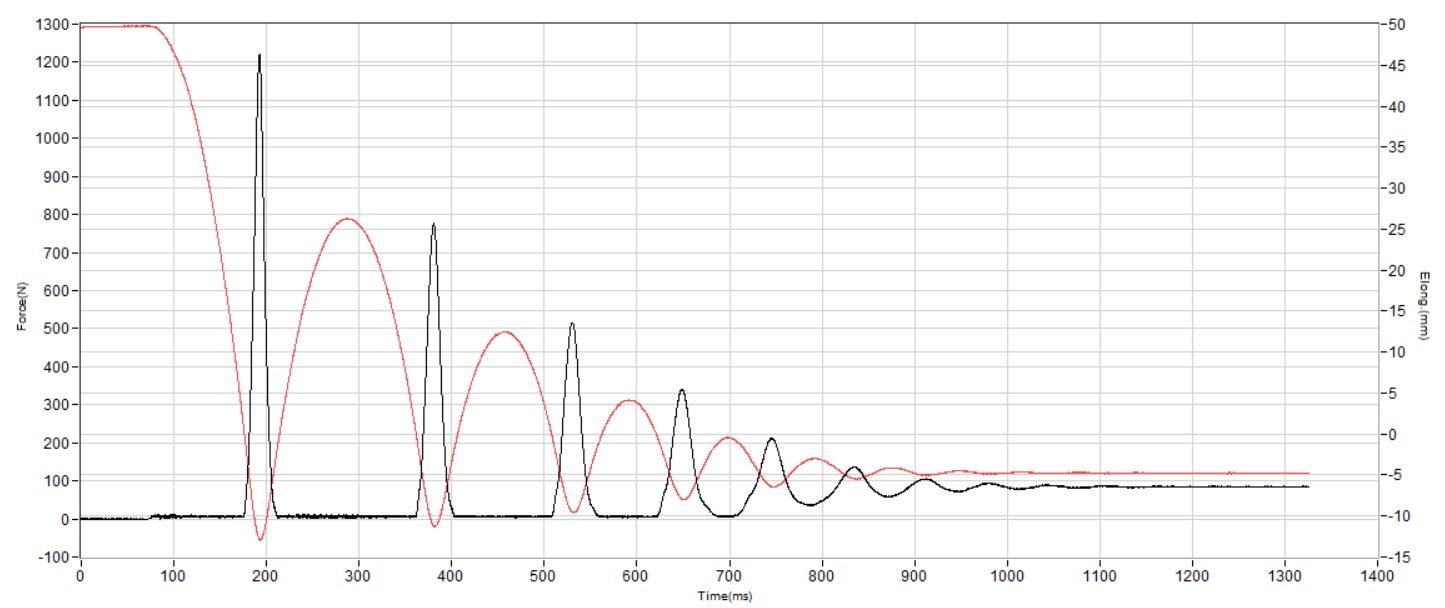
| Revolution 8 | 120 SA |
| Average | 129 SA |
Energy return
If there’s one reason to pick the Revolution 8 over a discounted Revolution 7, it’s energy return. This used to be the model’s weakest point, with values under 50%, but we discovered that things have changed with this update.
The Revolution 8 delivered 57.1% in the heel and 59.9% in the forefoot in our lab, an exciting upgrade over its predecessor. These numbers now stand closer to shoes priced 30% or 40% higher, showing how Nike’s new EVA foam offers a real boost.
| Revolution 8 | 57.1% |
| Average | 58.5% |
Heel stack
In the last two years, we’ve watched running shoes grow, and stack heights keep climbing as many daily trainers follow a maximalist direction. When we measured the Revolution 8, we discovered it breaks that trend, staying relatively low at just 31.8 mm in the heel.
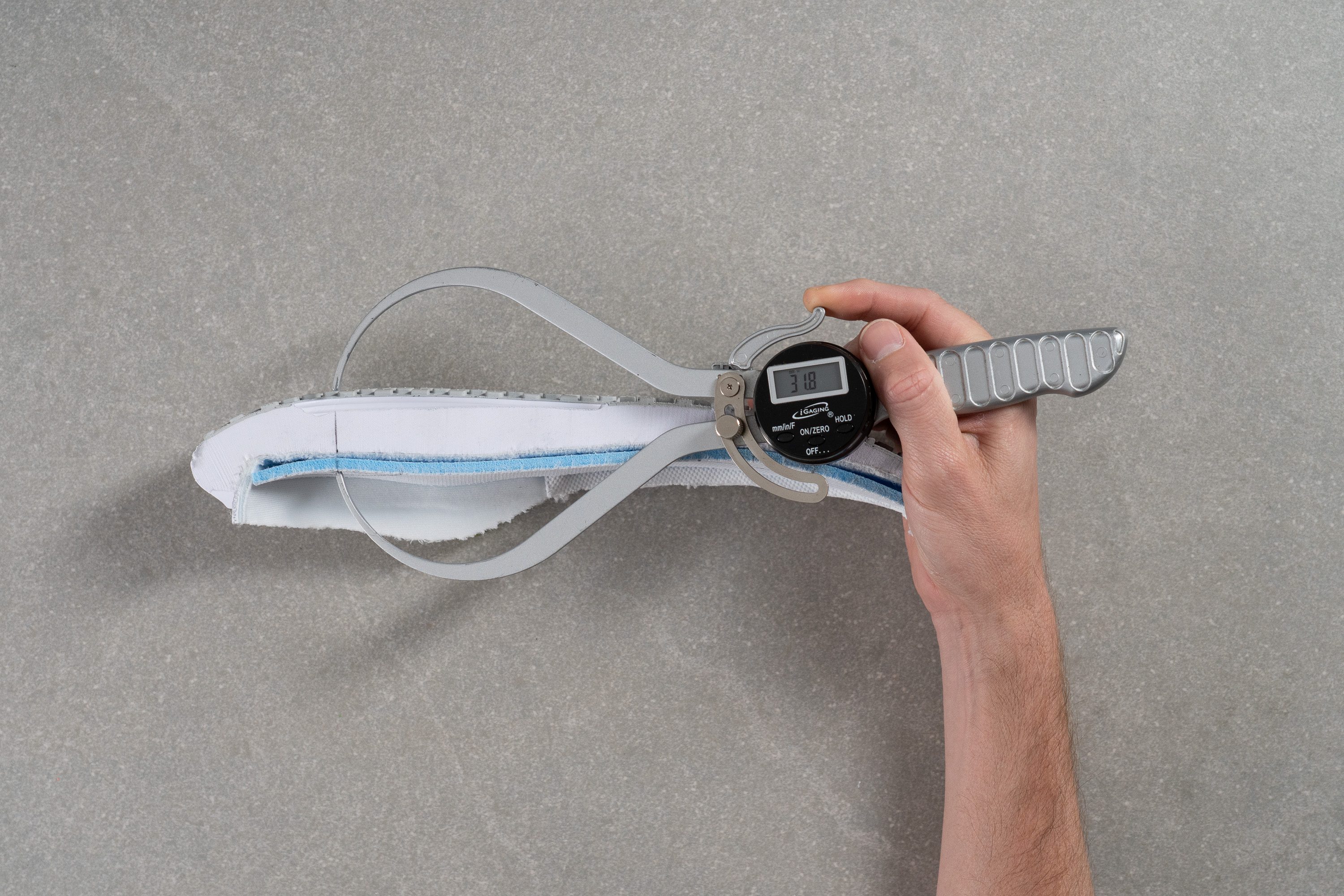
| Revolution 8 | 31.8 mm |
| Average | 34.8 mm |
Forefoot stack
With just 23.0 mm of stack height, the forefoot offers excellent ground feel. It’s perfect for runners who enjoy a proprioceptive-rich ride or lighter individuals who prefer to avoid bulky and unstable midsoles.
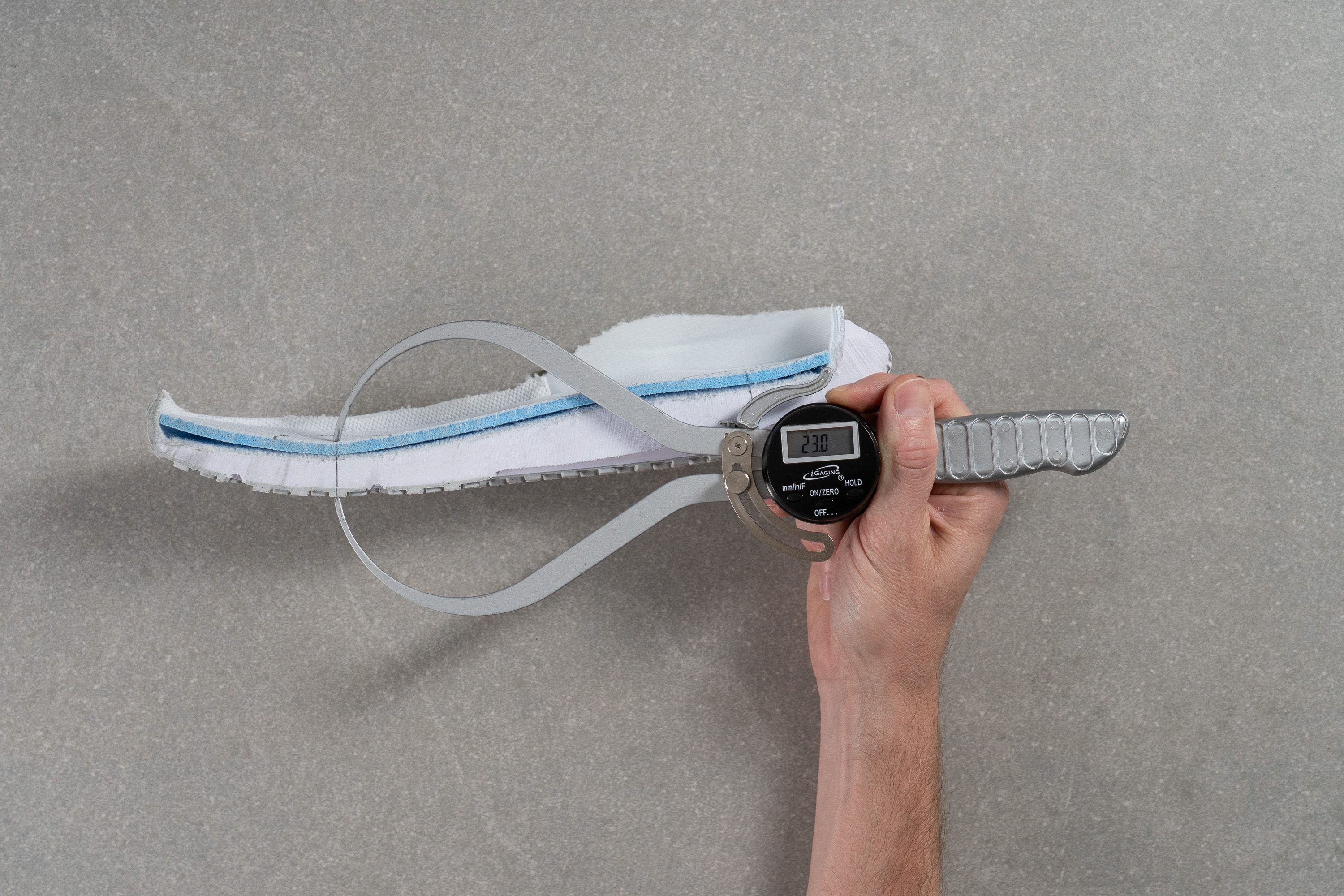
| Revolution 8 | 23.0 mm |
| Average | 26.2 mm |
Drop
Nike claims a 10-mm drop, while our measurement showed 8.8 mm. The difference is negligible, and the design still favours heel strikers although it's compatible with all footstrikes.
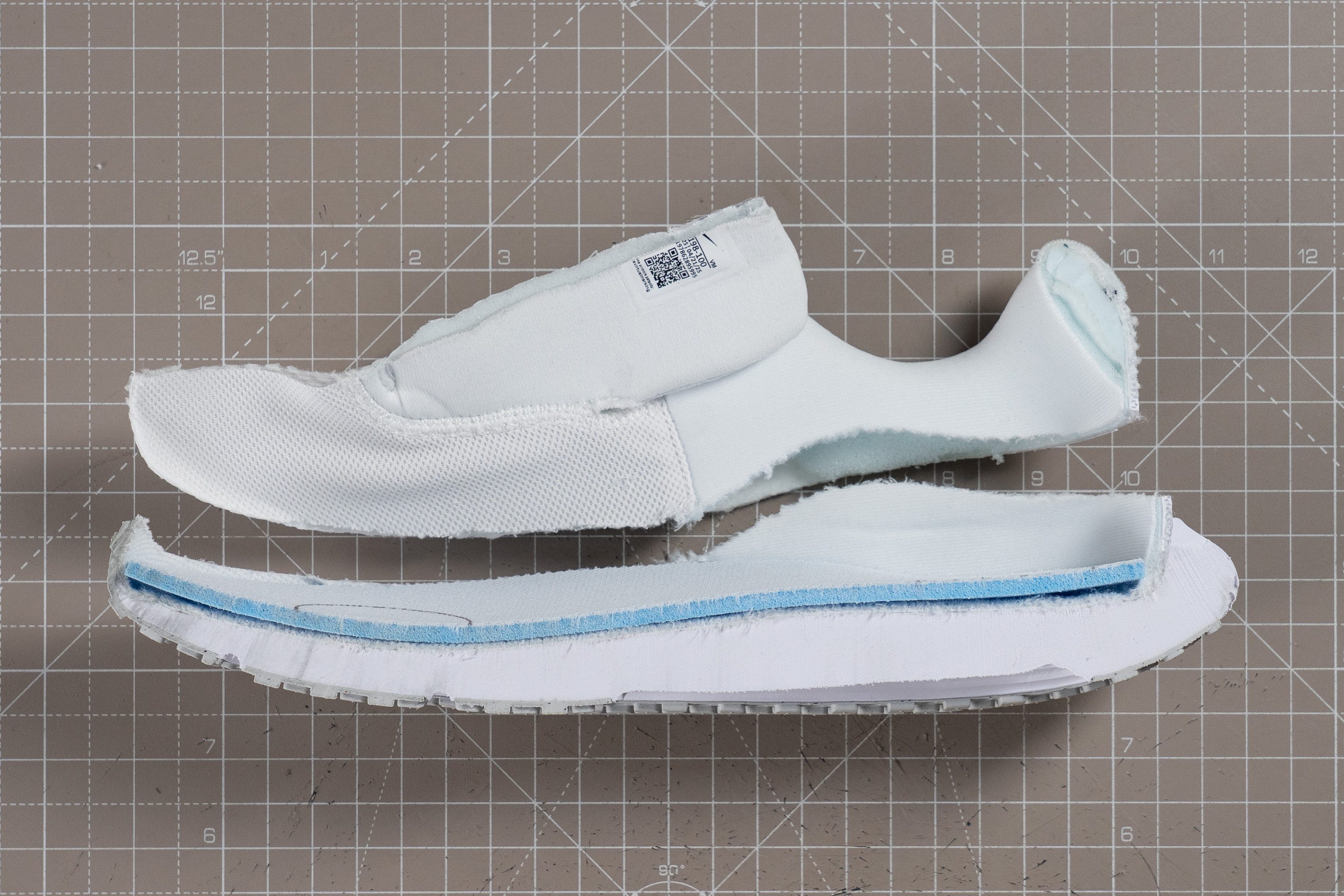
| Revolution 8 | 8.8 mm |
| Average | 8.6 mm |
Midsole softness
The new EVA foam of the Revolution 8 still feels firm, but not brick-hard like before. We tested it at 23.5 HA, and this result makes sense to us given the thin forefoot and its limited shock absorption in that area. Otherwise, midfoot and forefoot strikers would absolutely bottom out with this shoe on every stride.
It’s interesting that this shoe borrows the design language of the recently released Vomero 18, following Nike’s usual approach of making budget-friendly models look like their more expensive counterparts.
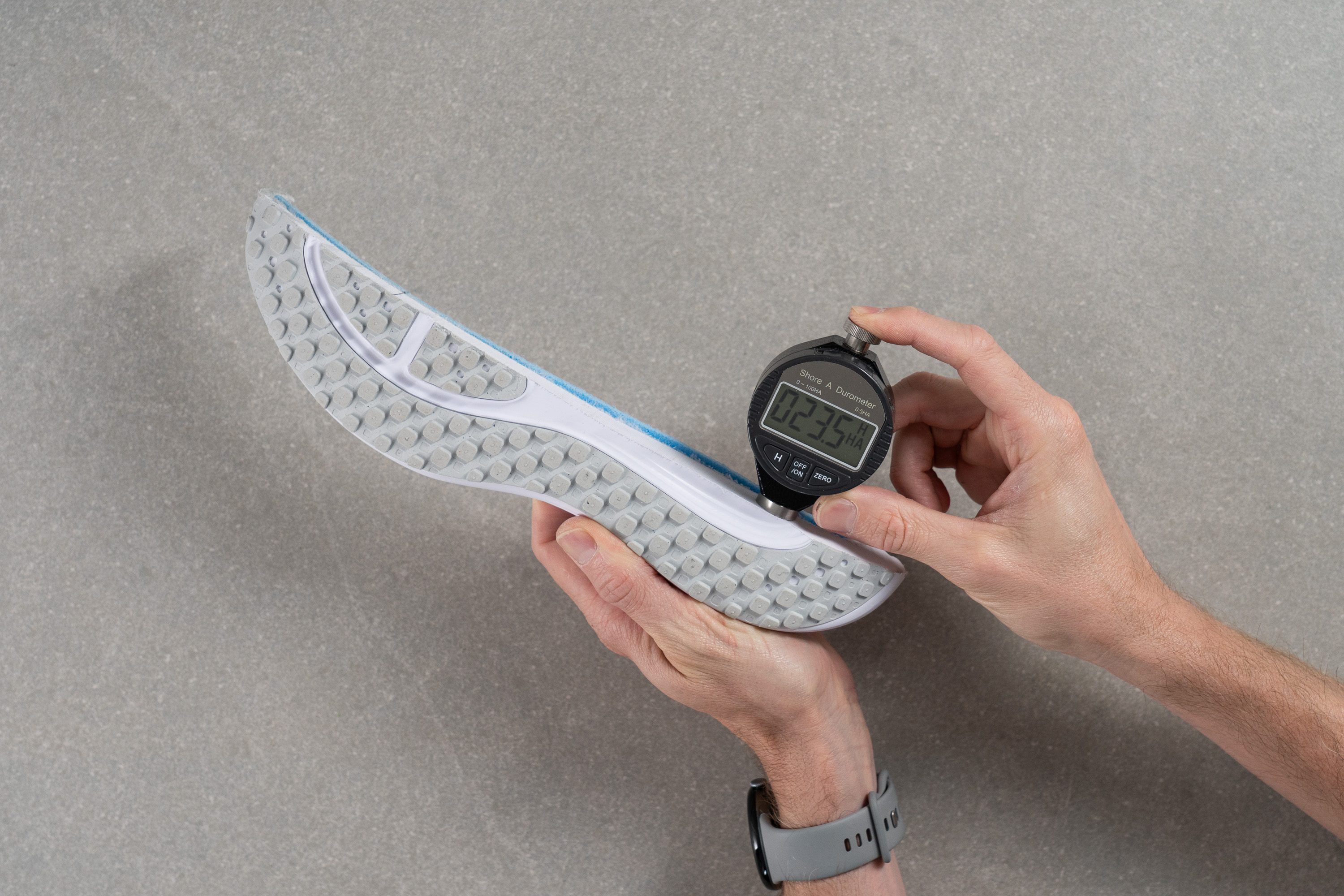
| Revolution 8 | 23.5 HA |
| Average | 20.4 HA |
Rocker
Cheap running shoes are evolving fast. Just a couple of years ago, it was rare to spot such a rounded heel on an entry-level model like the Revolution. Yet budget-friendly trainers also benefit from a curved heel, making landings smoother and giving heel strikers an easier entry point.
Meanwhile, the forefoot keeps a design with minimal curvature. Given its low stack and highly-flexible build, there's no need for more than that.
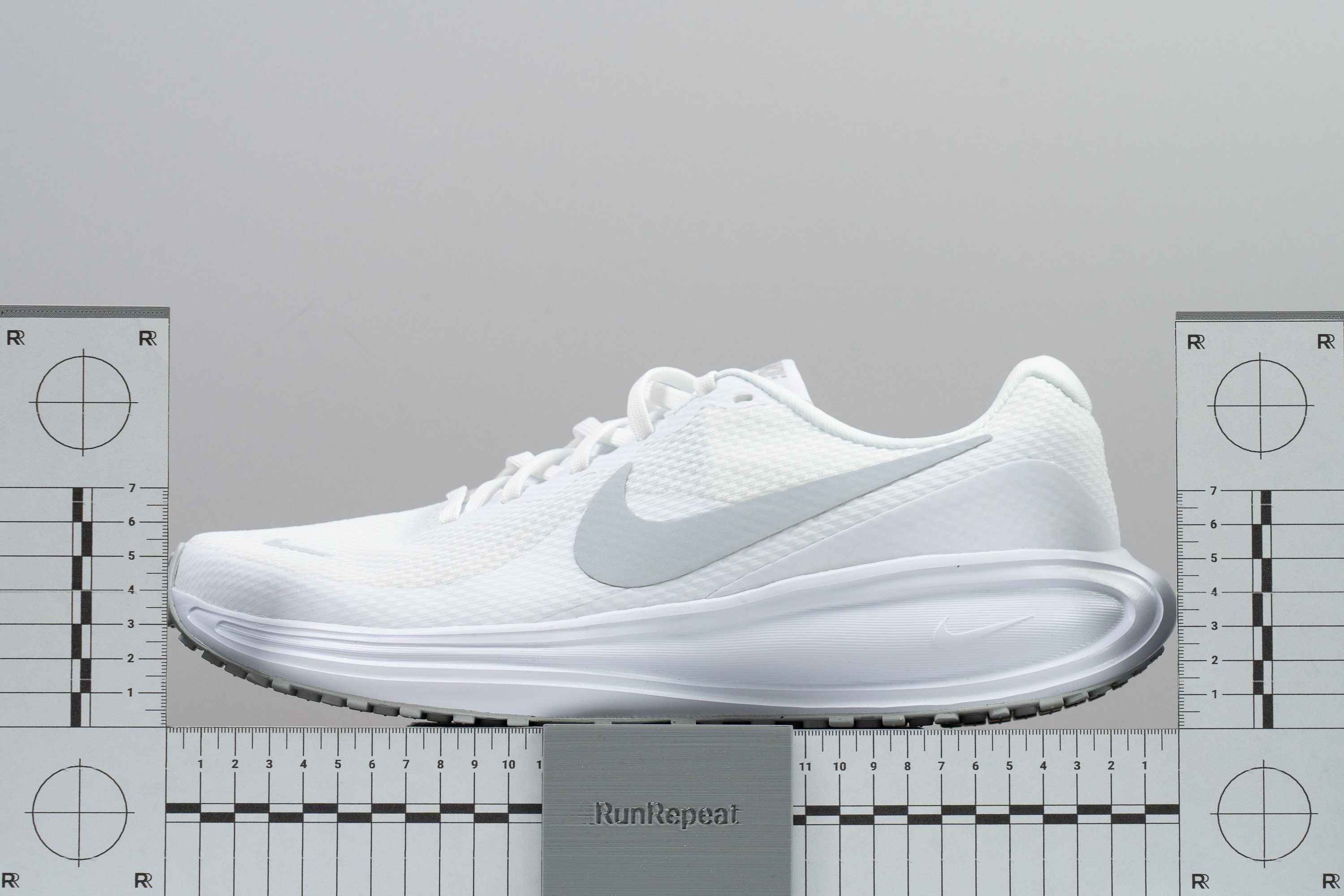
Size and fit
Size
Nike Revolution 8 fits true to size (45 votes).
Width / Fit
Nike has a reputation for designing tapered toeboxes, and the Revolution 8 continues that trend. When we tried them on, they didn’t feel spacious at all, but let’s check the actual measurements using our unique method.
Our gel mould of the Revolution 8’s interior measured 93.1 mm in width, fully confirming our first impressions. But let’s keep digging further.
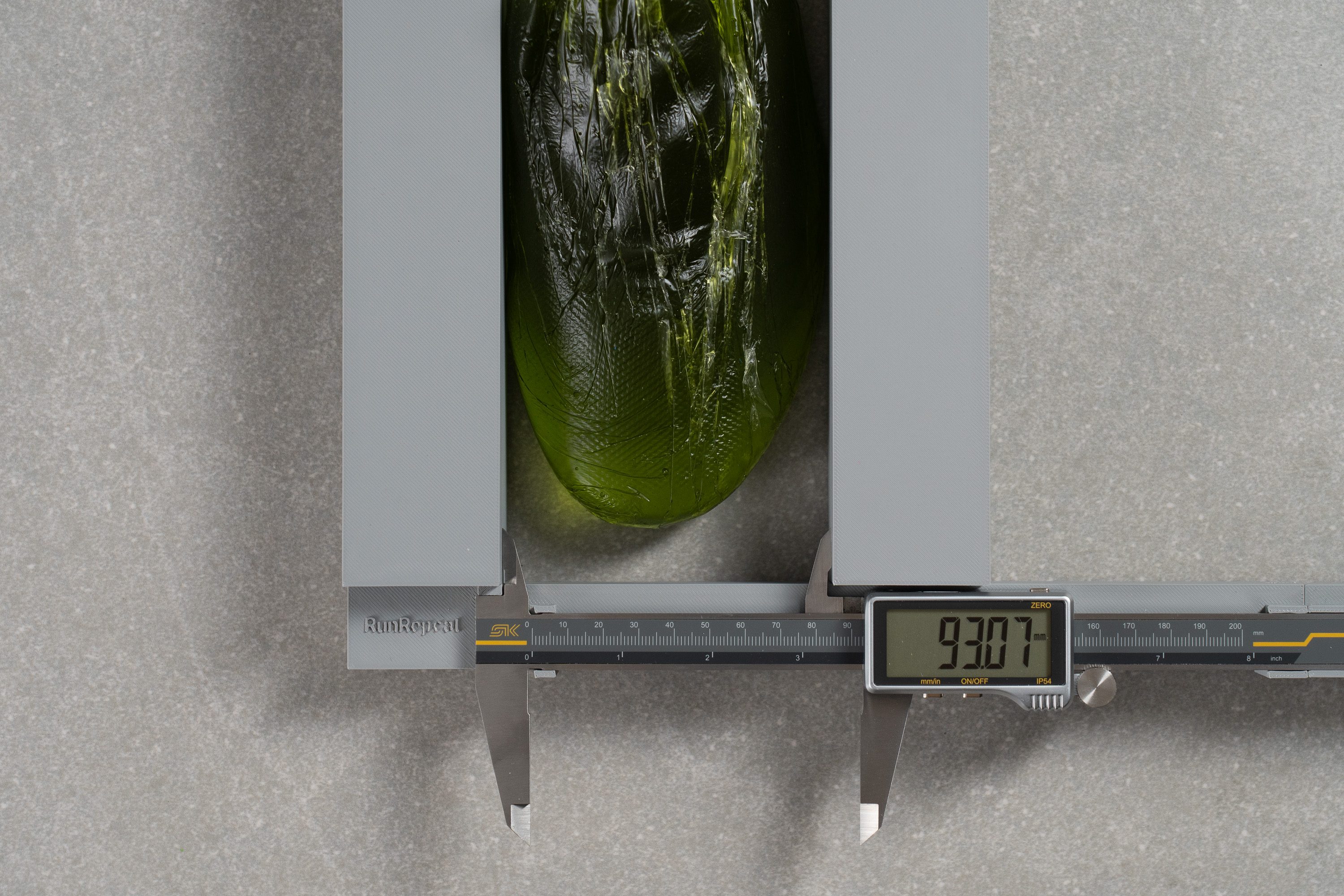
| Revolution 8 | 93.1 mm |
| Average | 95.1 mm |
Toebox width
Our second measurement also came in below the average, making it clear that toe room is limited.
On the brighter side, the Revolution 8 is available in wide and extra-wide sizes, though not in every market.
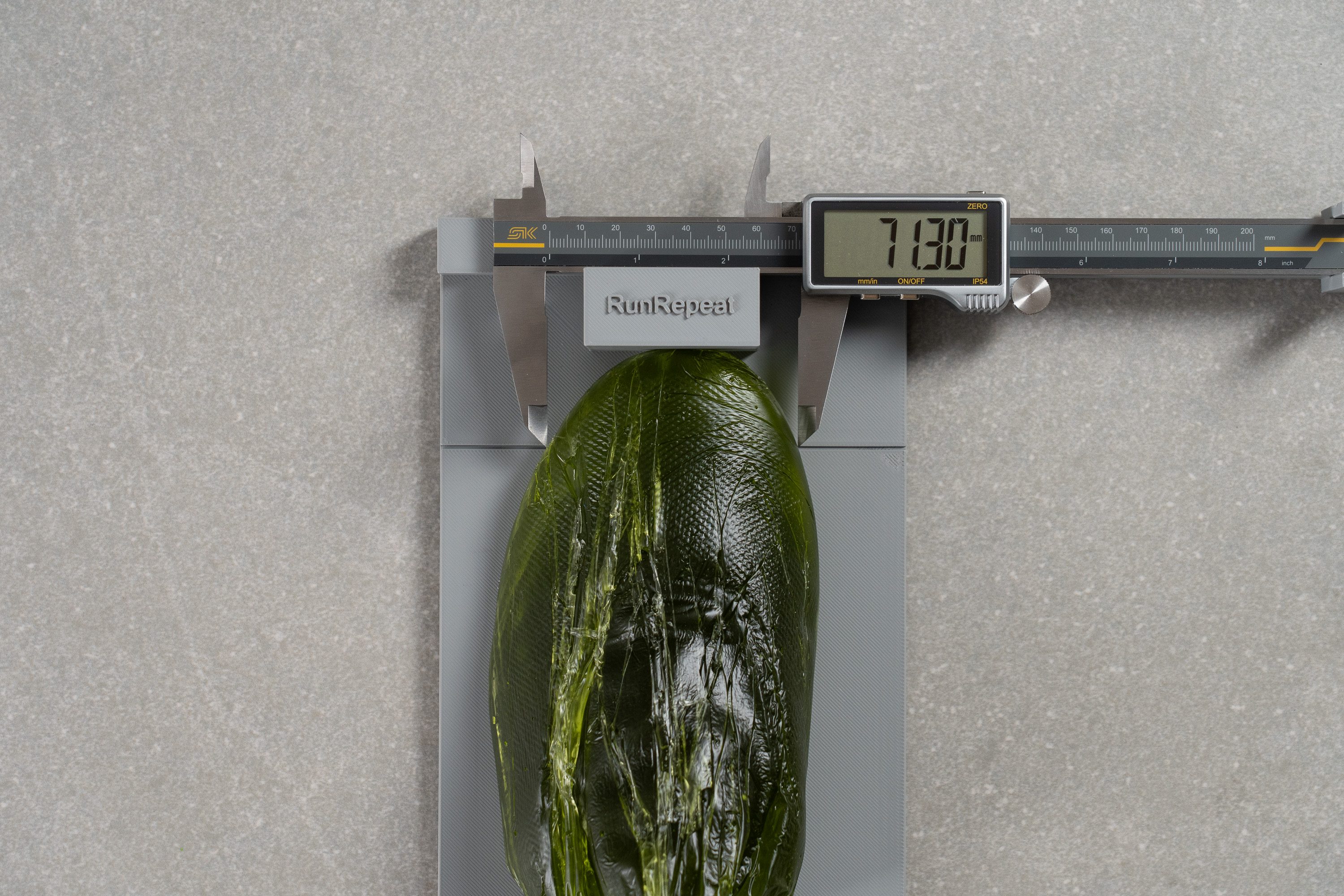
| Revolution 8 | 71.3 mm |
| Average | 73.2 mm |
Toebox height
The Revolution 8 keeps its snug-fit design vertically as well. When we tested them, we discovered limited upward toe movement, and our 23.4 mm measurement confirmed it. It definitely has a compact space that some may find restrictive.
If this feels like a deal-breaker, consider the Adidas Runfalcon 5, which offers a few extra millimetres of vertical clearance.
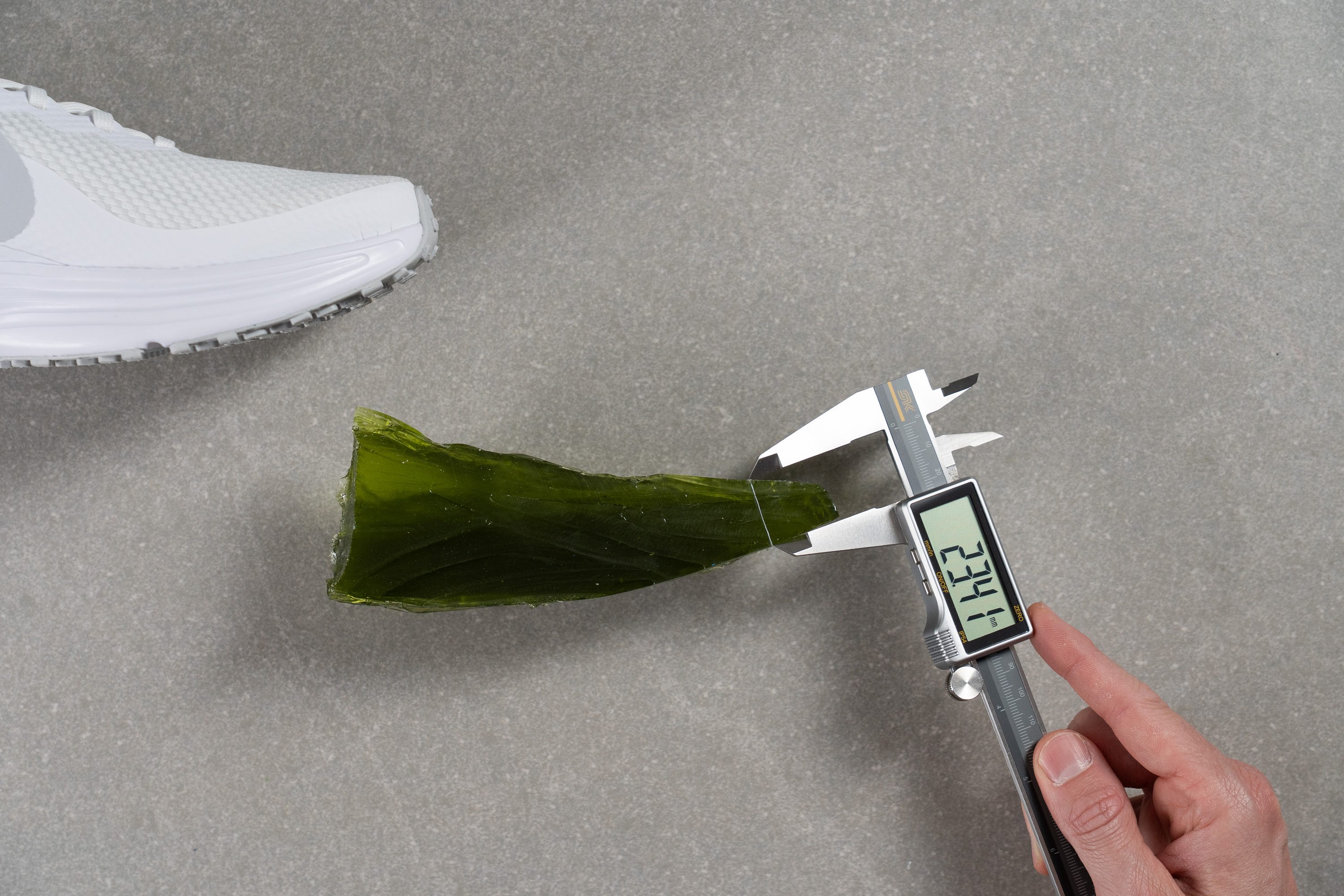
| Revolution 8 | 23.4 mm |
| Average | 27.1 mm |
Traction / Grip
Traction test
Even with its wallet-friendly price, the Revolution 8 impressed us by delivering reliable grip on both wet and dry roads. In our lab, it delivered a solid traction score of 0.48.
The truth is that Nike once struggled with outsole performance, but here we found another step forward.
| Revolution 8 | 0.48 |
| Average | 0.48 |
Outsole design
This outsole uses a waffle-inspired pattern, a design Nike has relied on for decades. The square lugs create multiple contact points with the ground, helping improve grip on both dry and wet surfaces while staying durable for road use.
Coverage is very good in both the heel and forefoot. There's some exposed foam in the central arch area, clearly an intentional move to save some weight. There’s also a visible cutout in the forefoot that enhances flexibility, although from a design perspective it feels somewhat questionable.
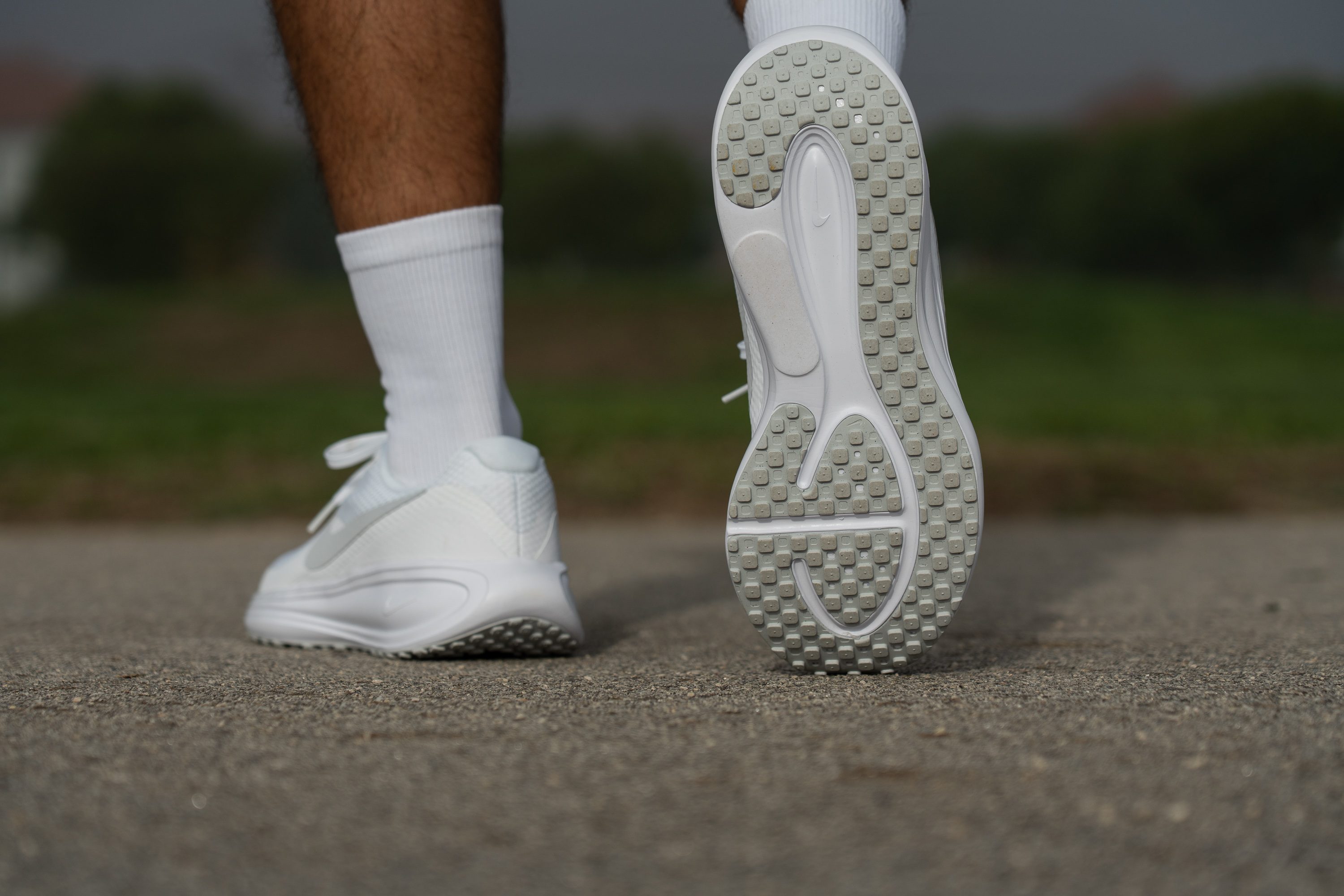
Flexibility / Stiffness
The waffle pattern on the outsole, paired with the ugly forefoot cutout and the low stack height, creates outstanding flexibility at just 9.1N in our test, making the Revolution 8 great for daily runs while also working well as a casual sneaker.
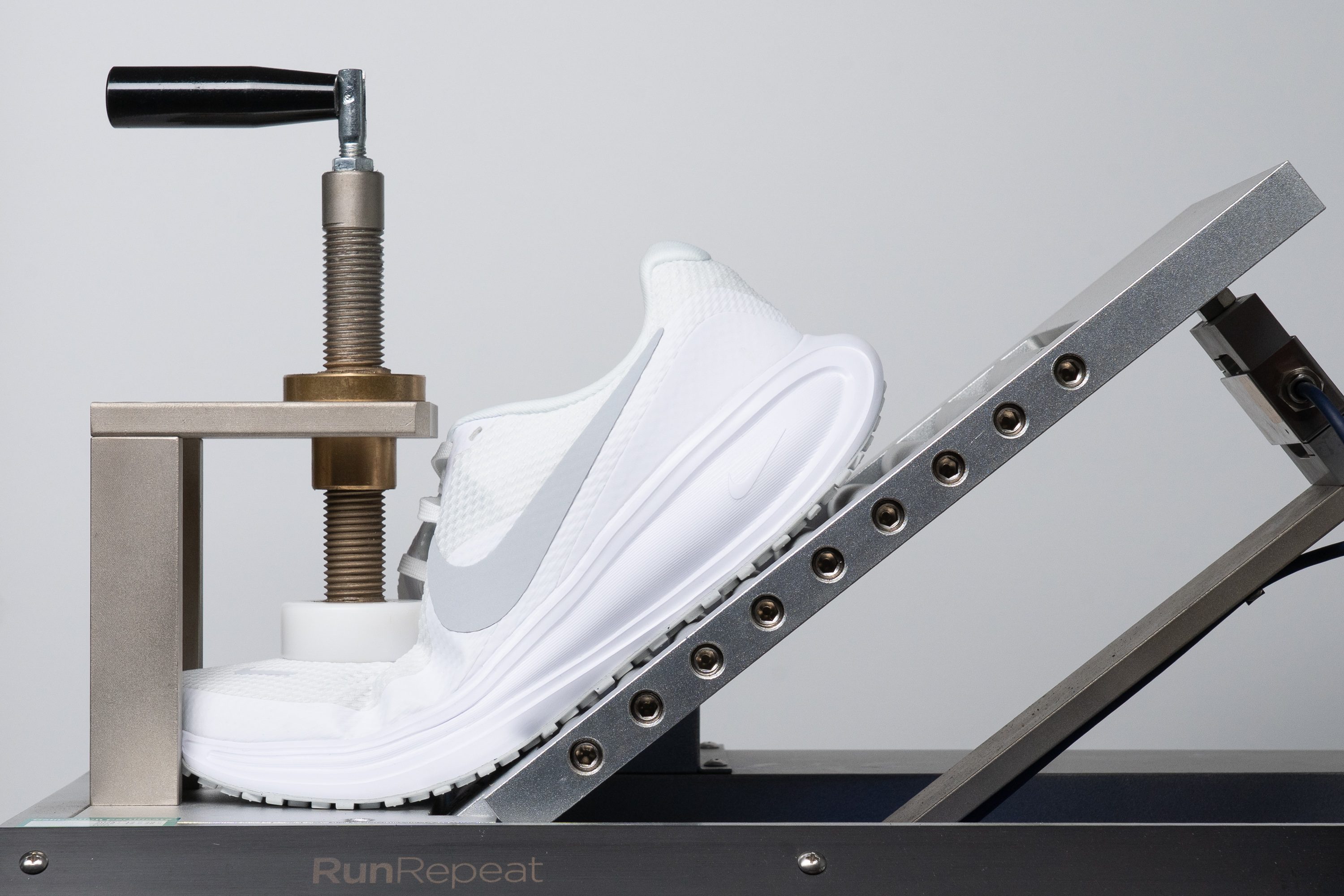
| Revolution 8 | 9.1N |
| Average | 15.3N |
Weight
Weight is another clear upgrade from the Revolution 7. Thanks to the new foam and several design tweaks, it now hits just 9.3 oz (264g), a 6% drop from its predecessor, which is definitely positive news.
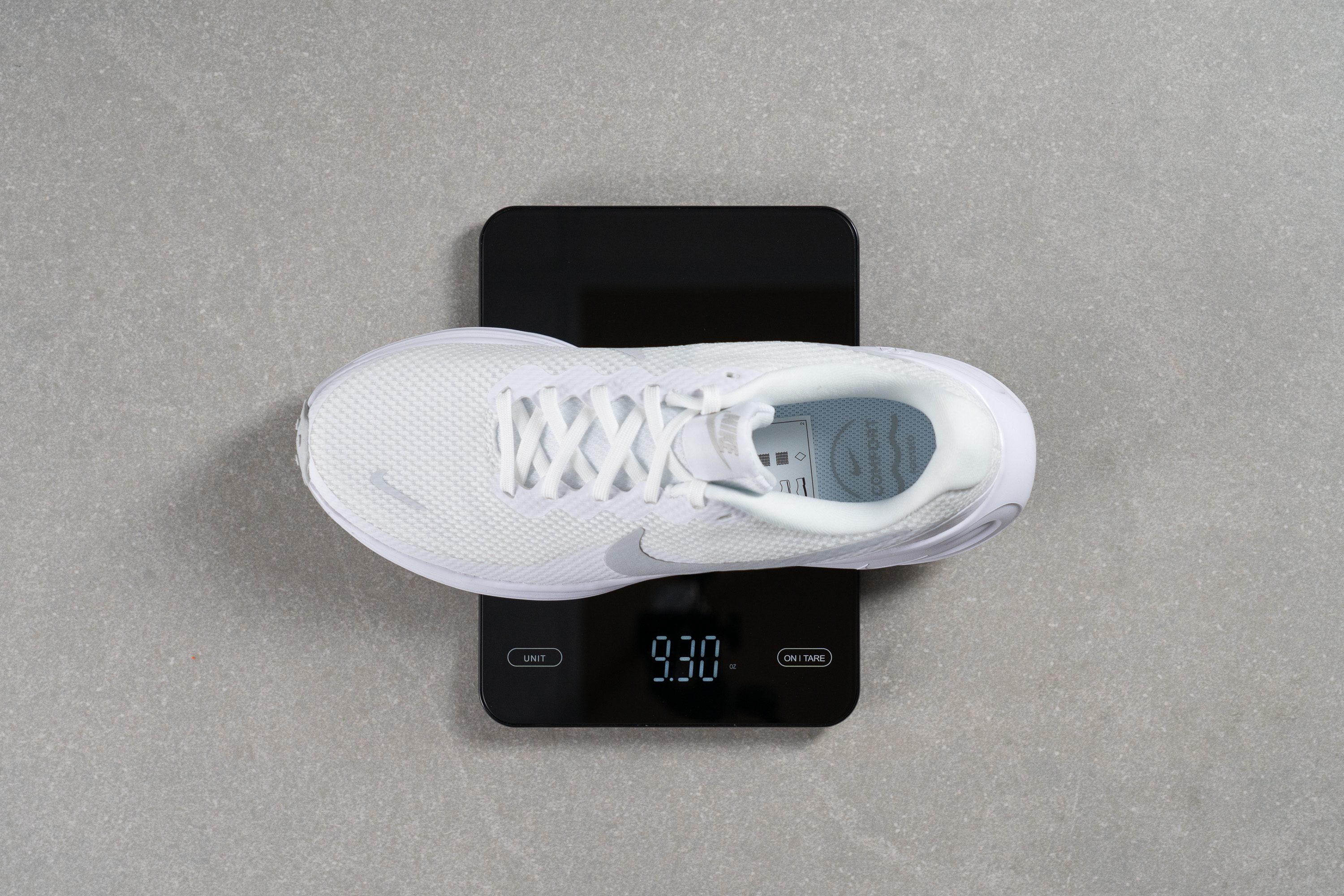
| Revolution 8 | 9.3 oz (264g) |
| Average | 9.3 oz (264g) |
Breathability
Hooking up our smoke machine to a custom 3D-printed piece, we tested airflow in the toebox.
The outcome was moderate ventilation, scoring 3/5 in our lab—a solid result that works year-round, especially in colder climates.
We then used a high-powered LED light to check transparency, and it became clear how Nike structured the upper. Ventilation is focused on the top, while the denser bottom provides a stability boost.
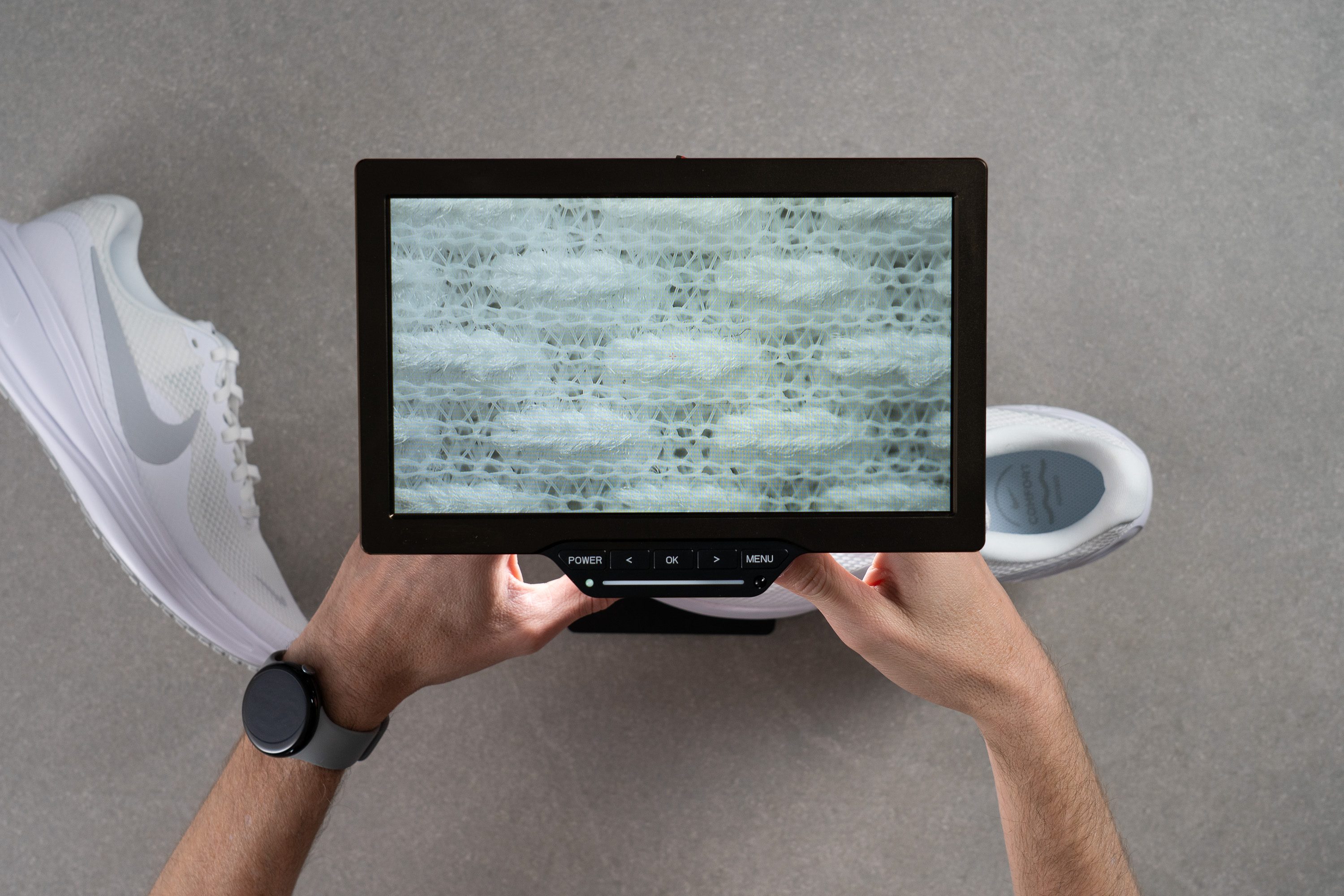
Under the microscope, we discovered the new mesh is far better quality than what we saw in the predecessor, and all while keeping the same price, which is impressive.
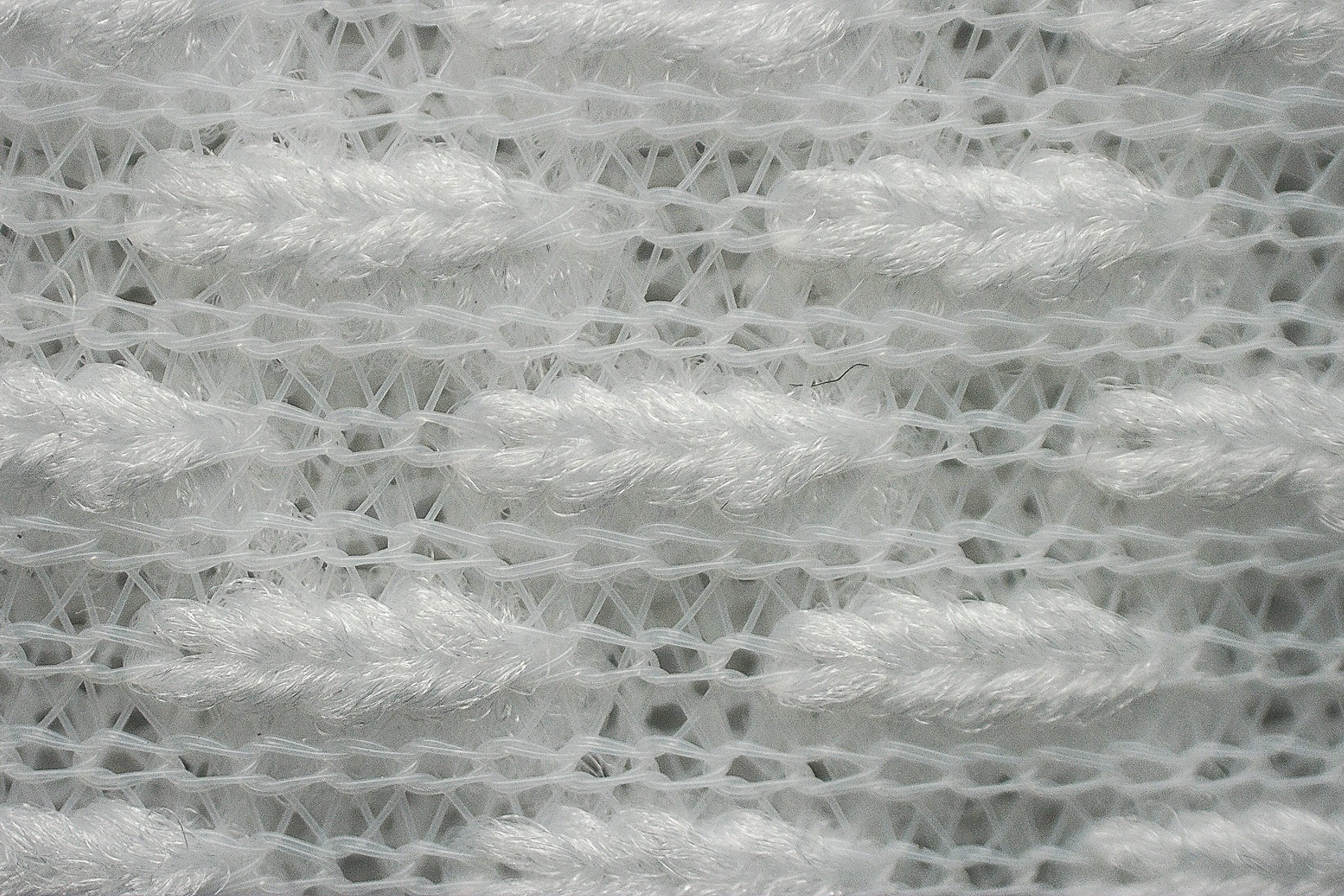
It’s also obvious why breathability isn’t stellar: there are no wide gaps for air to escape, so performance is limited here.
We noted that the heel is ultra-plush, and the tongue is nicely padded. Even though airflow falls short of our expectations, we consider this another positive step forward.
| Revolution 8 | 3 |
| Average | 3.7 |
Stability
Lateral stability test
We discovered that the Revolution 8 feels a little less stable than its predecessor, but the trade-off is a softer midsole that feels more pleasant underfoot.
From our perspective, this shoe is best for neutral runners. Those with pronation issues should instead consider alternatives like the ASICS GT 1000 14.
Torsional rigidity
When we tested the Revolution 8, we noticed a bit of resistance during twisting and bending. We rated it 3 out of 5, a score that matches what we often see in beginner-friendly models.
| Revolution 8 | 3 |
| Average | 3.5 |
Heel counter stiffness
The heel counter leans toward the stiffer side, earning a 4 out of 5. Still, this isn’t an issue, as Nike packed plenty of foam in the area.
| Revolution 8 | 4 |
| Average | 2.9 |
Midsole width - forefoot
We measured 112.9 mm at the widest part of the forefoot. This falls into a balanced range—an average design choice that suits most runners while leaving out only those at the far extremes.
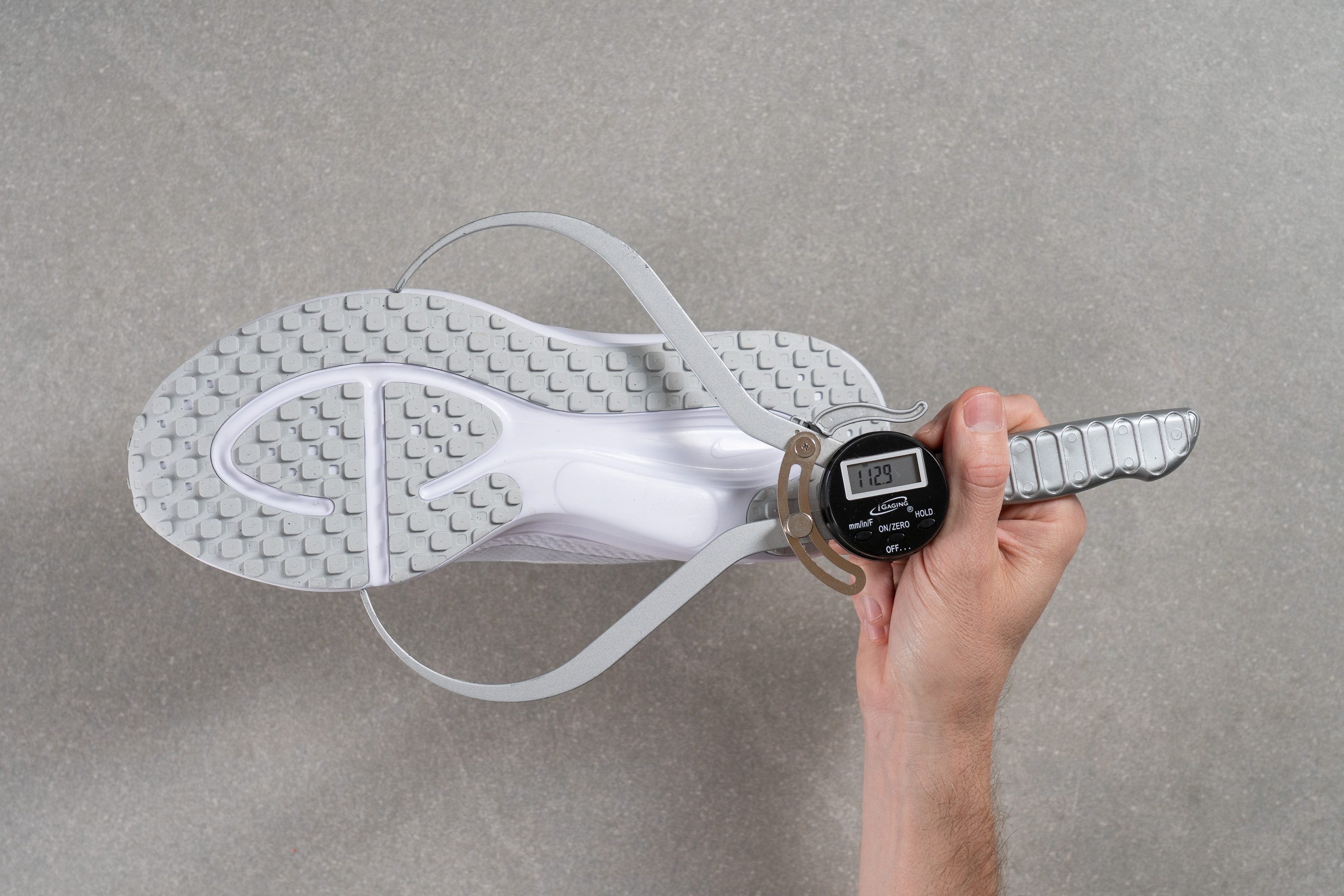
| Revolution 8 | 112.9 mm |
| Average | 114.4 mm |
Midsole width - heel
The heel is far from bulky, measuring exactly 90.0 mm. It offers just enough stability while avoiding any feeling of excess weight or a cumbersome build.
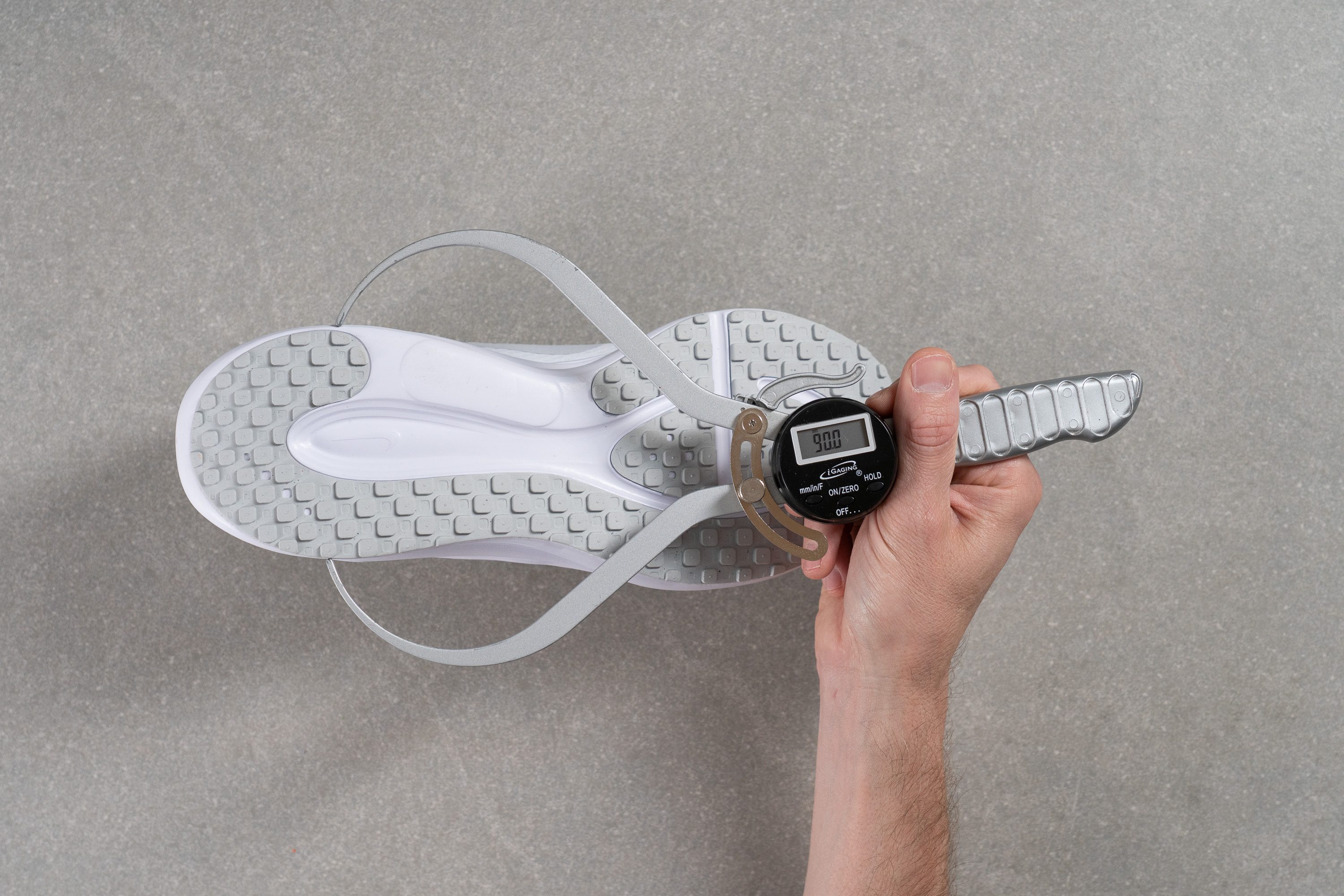
| Revolution 8 | 90.0 mm |
| Average | 90.7 mm |
Durability
Toebox durability
It’s interesting how the running shoe market works. Buyers of budget-friendly models often focus heavily on durability, even though these shoes cost only a fraction of premium daily trainers.
With that in mind, we knew durability testing was key for the Revolution 8. We tested the upper and discovered an impressive 4/5 rating, largely thanks to the super-strong mesh that avoids ventilation holes and resists wear effectively.
| Revolution 8 | 4 |
| Average | 2.6 |
Heel padding durability
The heel padding is loaded with foam, delivering a plush step-in feel. Normally, that much cushioning can hurt durability, but in this case it impressed us, earning another strong 4/5 in our testing.
| Revolution 8 | 4 |
| Average | 3.4 |
Outsole durability
Our demanding Dremel test caused 1.0 mm of damage to the outsole. That’s a decent result, and it’s enough to show that early wear won’t be a real issue with this shoe.
| Revolution 8 | 1.0 mm |
| Average | 1.1 mm |
Outsole thickness
At 3.3 mm thick, the outsole is built to handle wear and tear effectively.
And hey, we like that Nike was able to trim the shoe’s weight yet kept a solid rubber layer to endure long-term use.
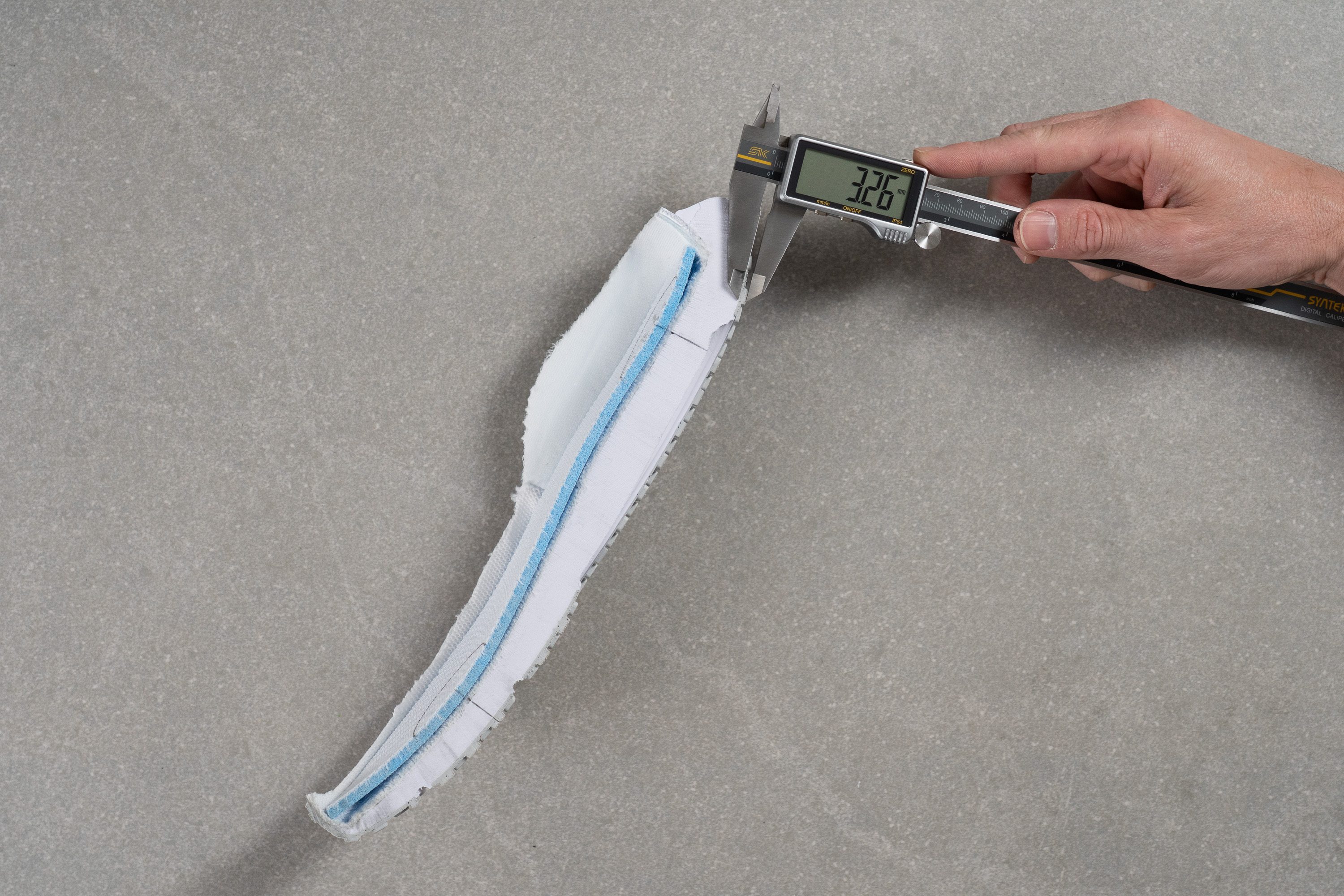
| Revolution 8 | 3.3 mm |
| Average | 3.2 mm |
Misc
Insole thickness
The insole is built from EVA foam and measures an average thickness of 4.5 mm.
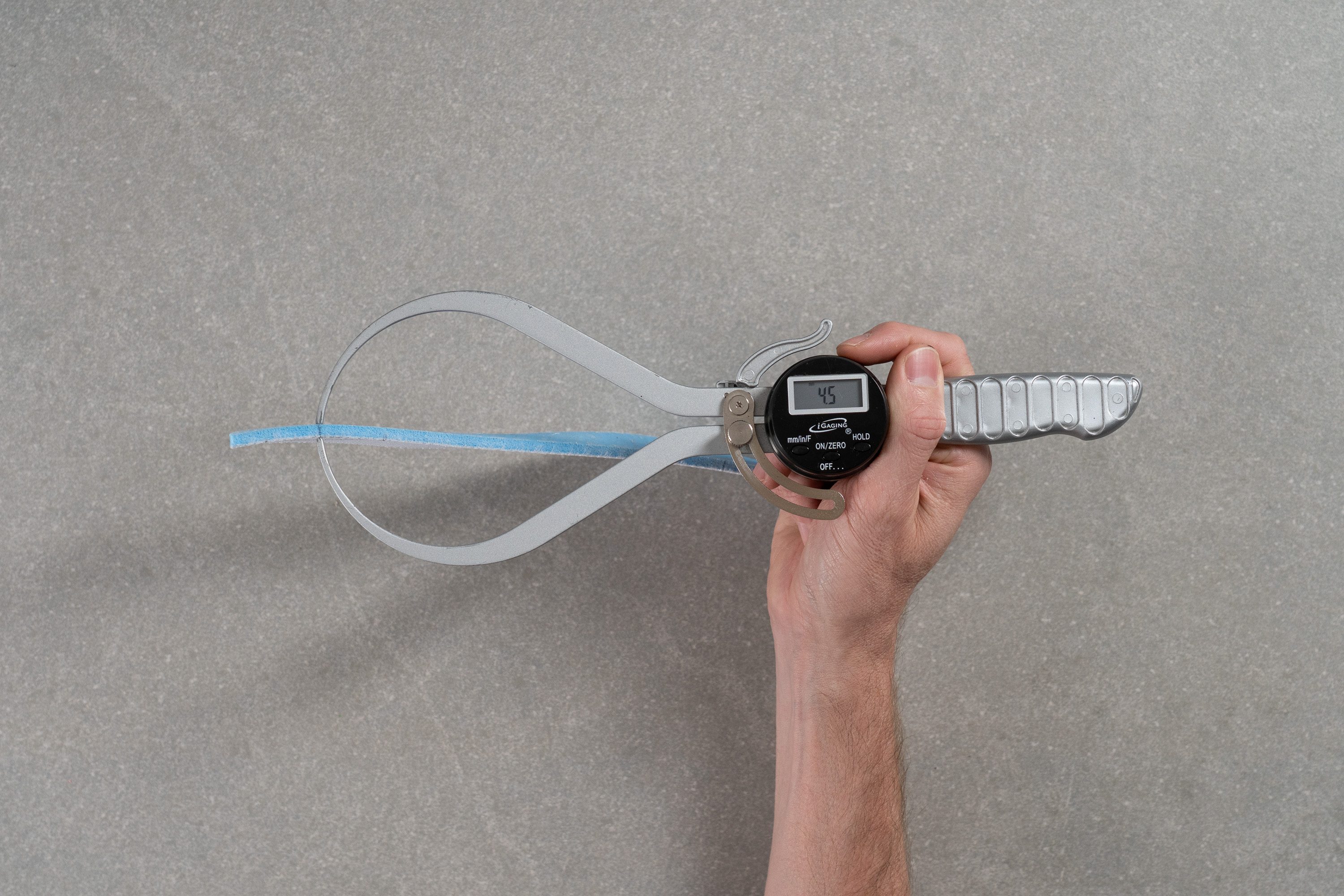
| Revolution 8 | 4.5 mm |
| Average | 4.5 mm |
Removable insole
The insole feels quite cheap, and it’s one of the areas where you immediately notice the gap compared to a regular-priced shoe. Luckily we found that it's removable, and swapping it for a better insole can easily improve the cushioning.
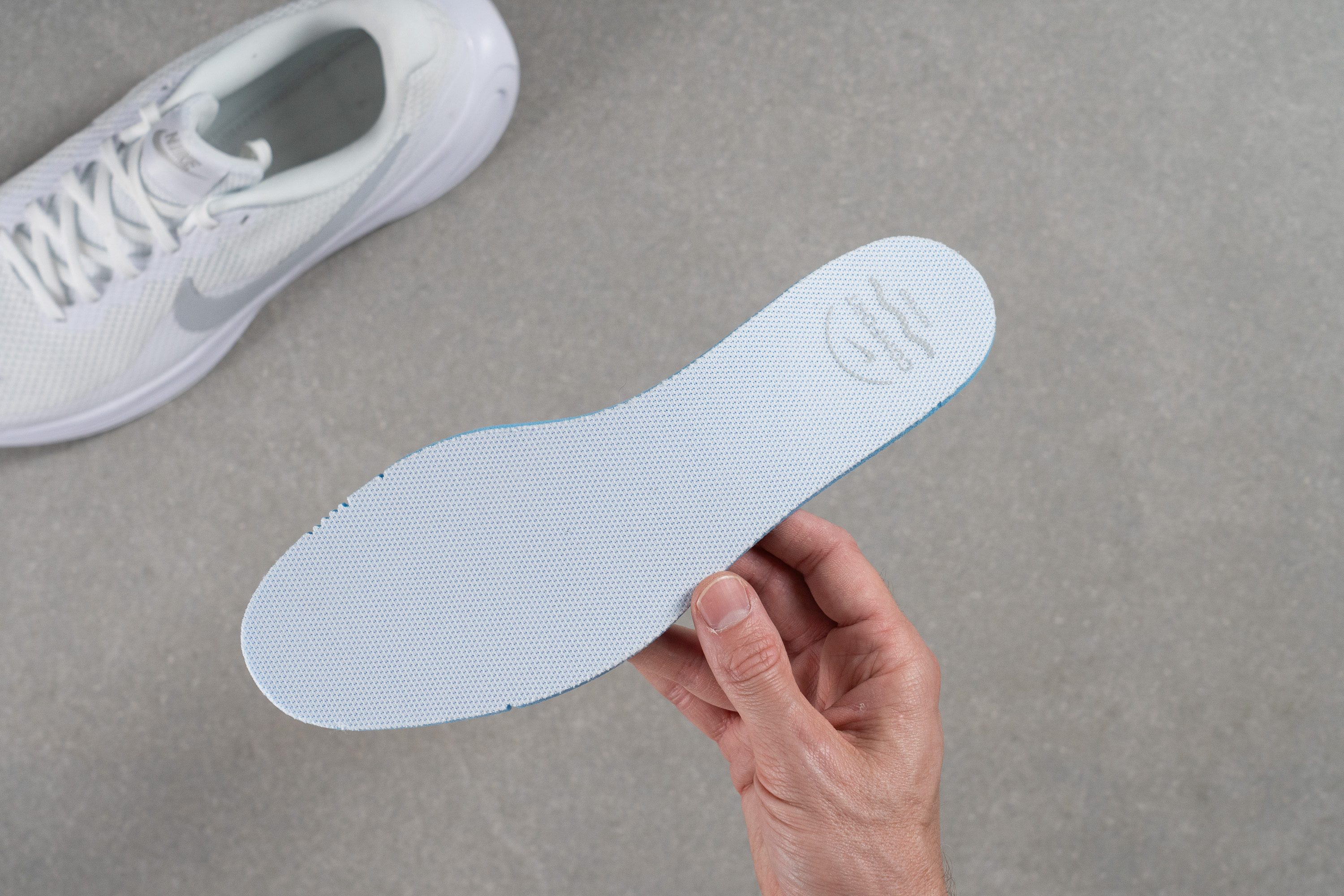
| Revolution 8 | Yes |
Midsole softness in cold (%)
The Revolution 8 still doesn’t feature a premium foam—and we don’t expect it ever will—so it’s no surprise that performance drops in cold weather. In our test, we measured a 31% decrease in softness.
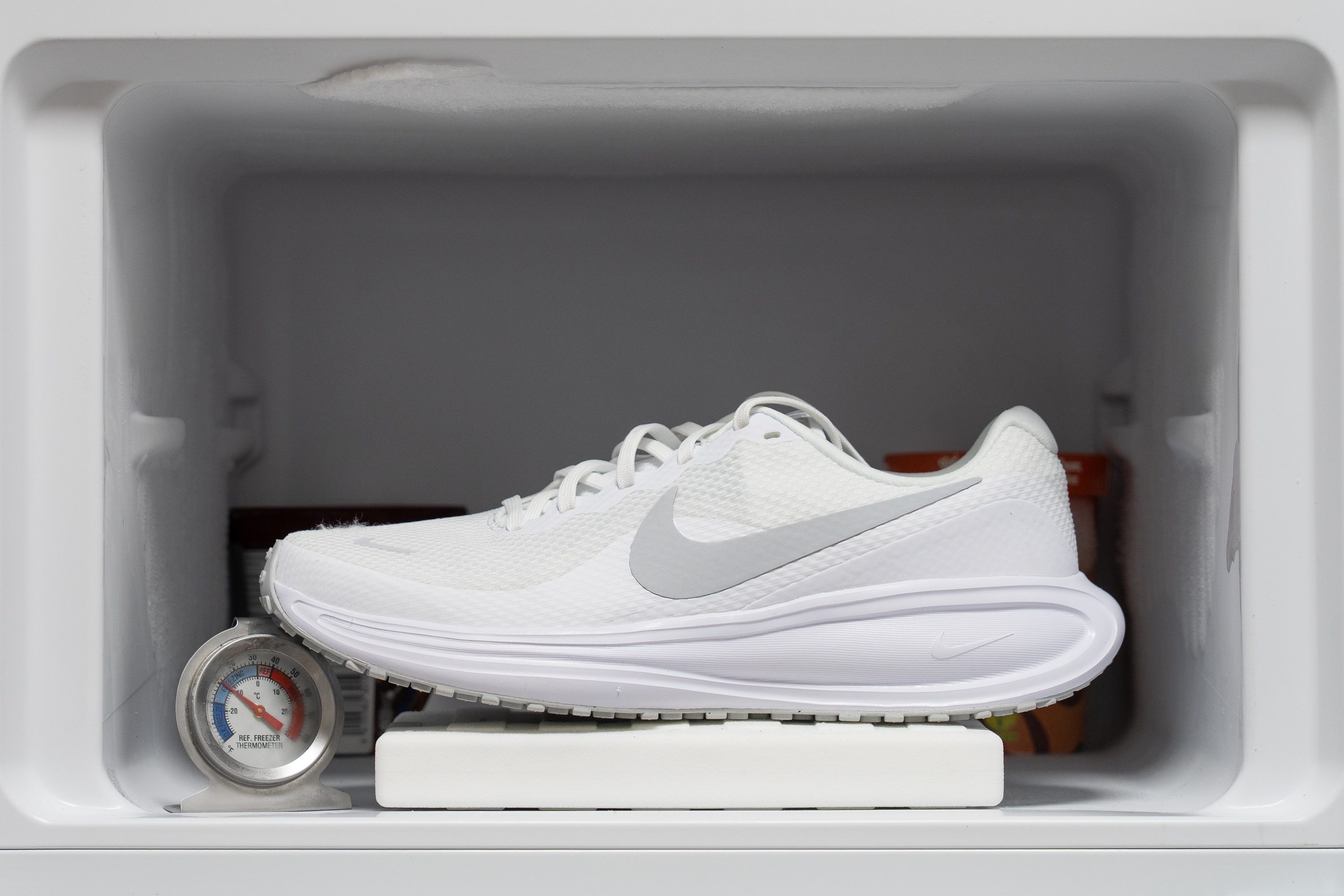
| Revolution 8 | 31% |
| Average | 24% |
Reflective elements
To keep the price down, Nike had to cut a few corners, and this time the shoe misses out on reflective elements.
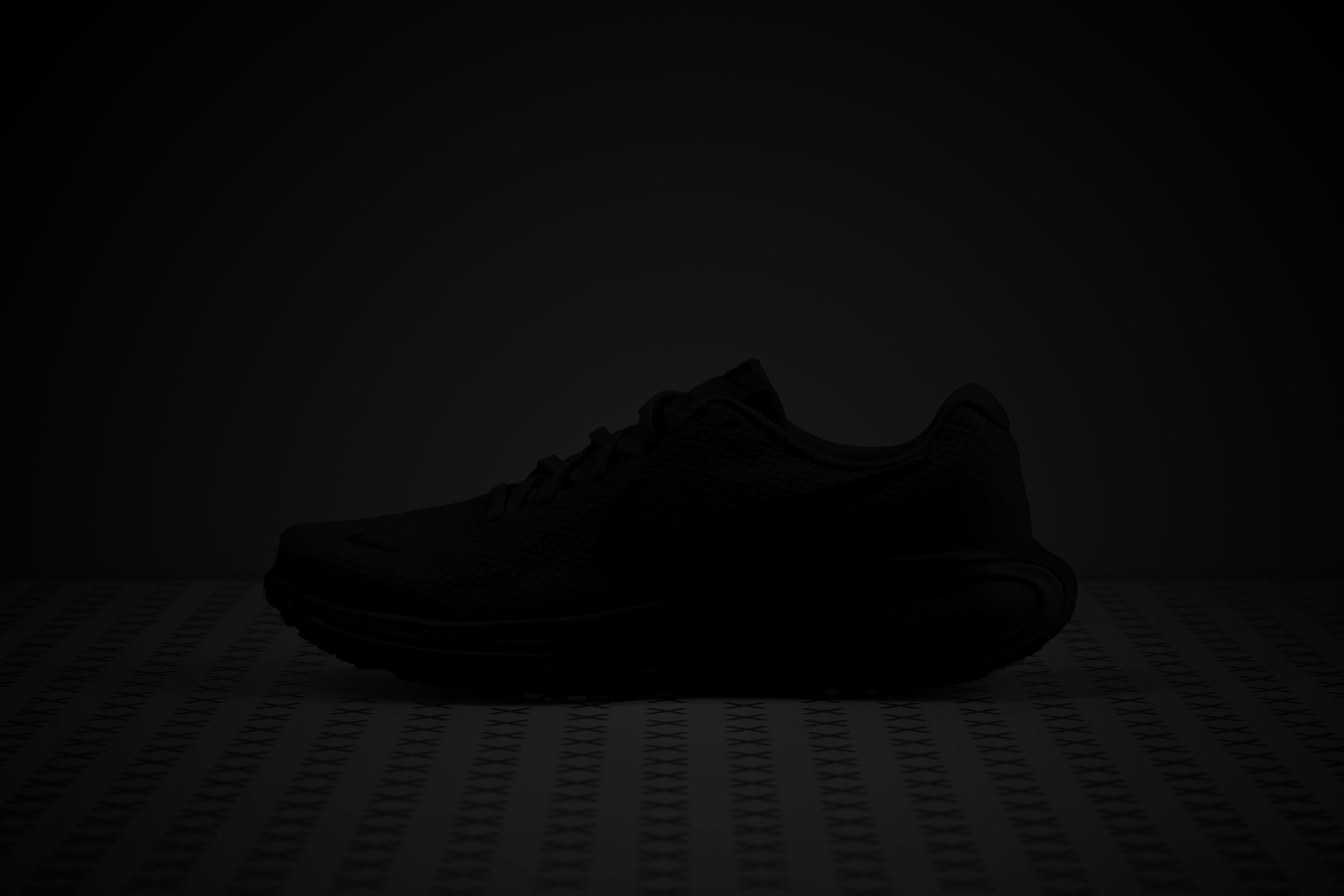
| Revolution 8 | No |
Tongue padding
The lacing system is simple and no-frills, built with standard punched eyelets and zero gimmicks. This design is common in budget running shoes, and in this case, it works perfectly fine.
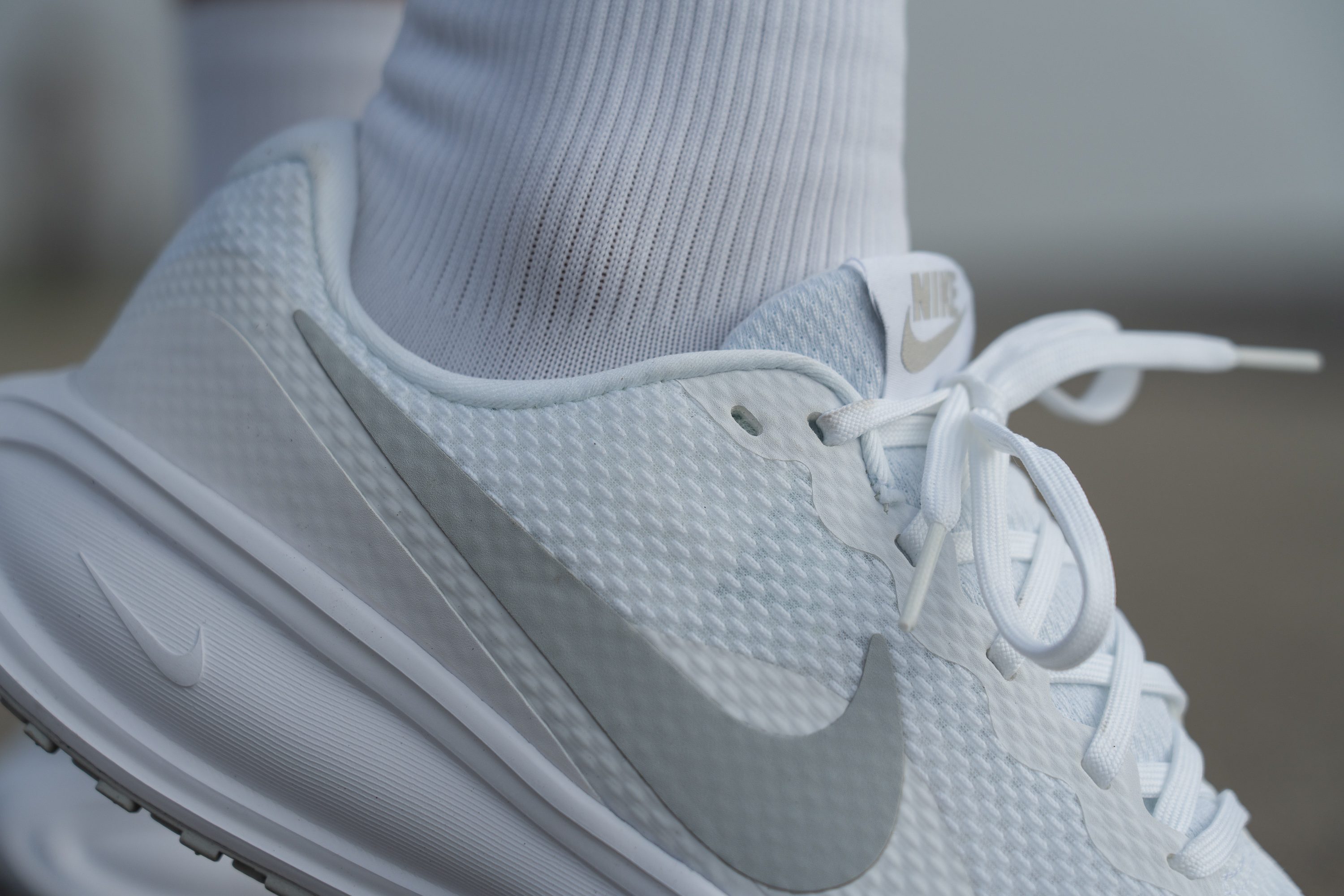
The main reason why the Revolution 8 lost a tonne of weight compared to version 7 is the new midsole, but the tongue is another huge factor. With 4.3 mm of thickness, this one is way lighter than the previous one that had 10.1 mm of padding. And we think it's a good decision too, it was simply too thick.
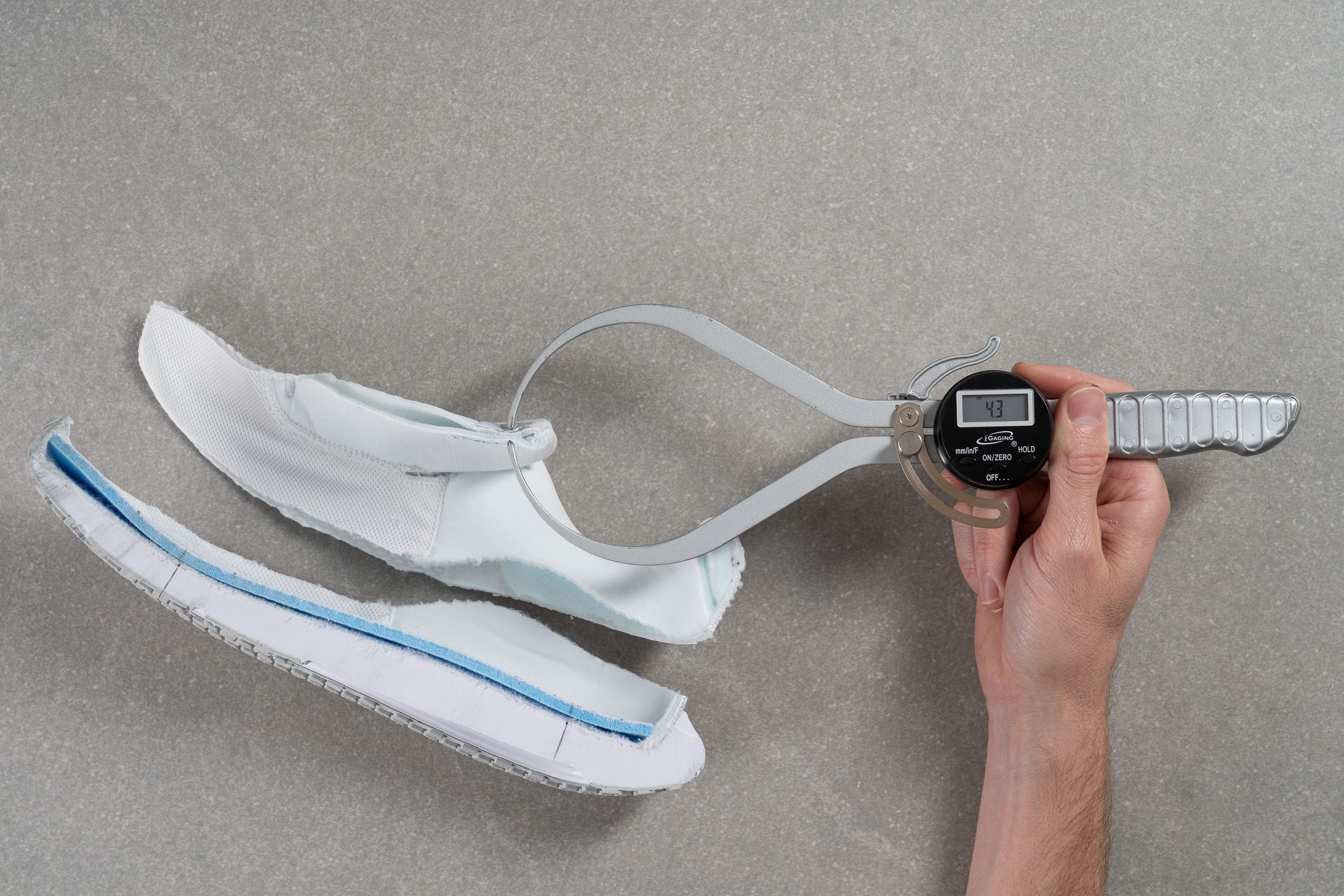
| Revolution 8 | 4.3 mm |
| Average | 5.8 mm |
Tongue: gusset type
In this model, the tongue is attached to the sides, staying secure instead of shifting around like in many cheap running shoes. It adds real value to the Revolution 8!
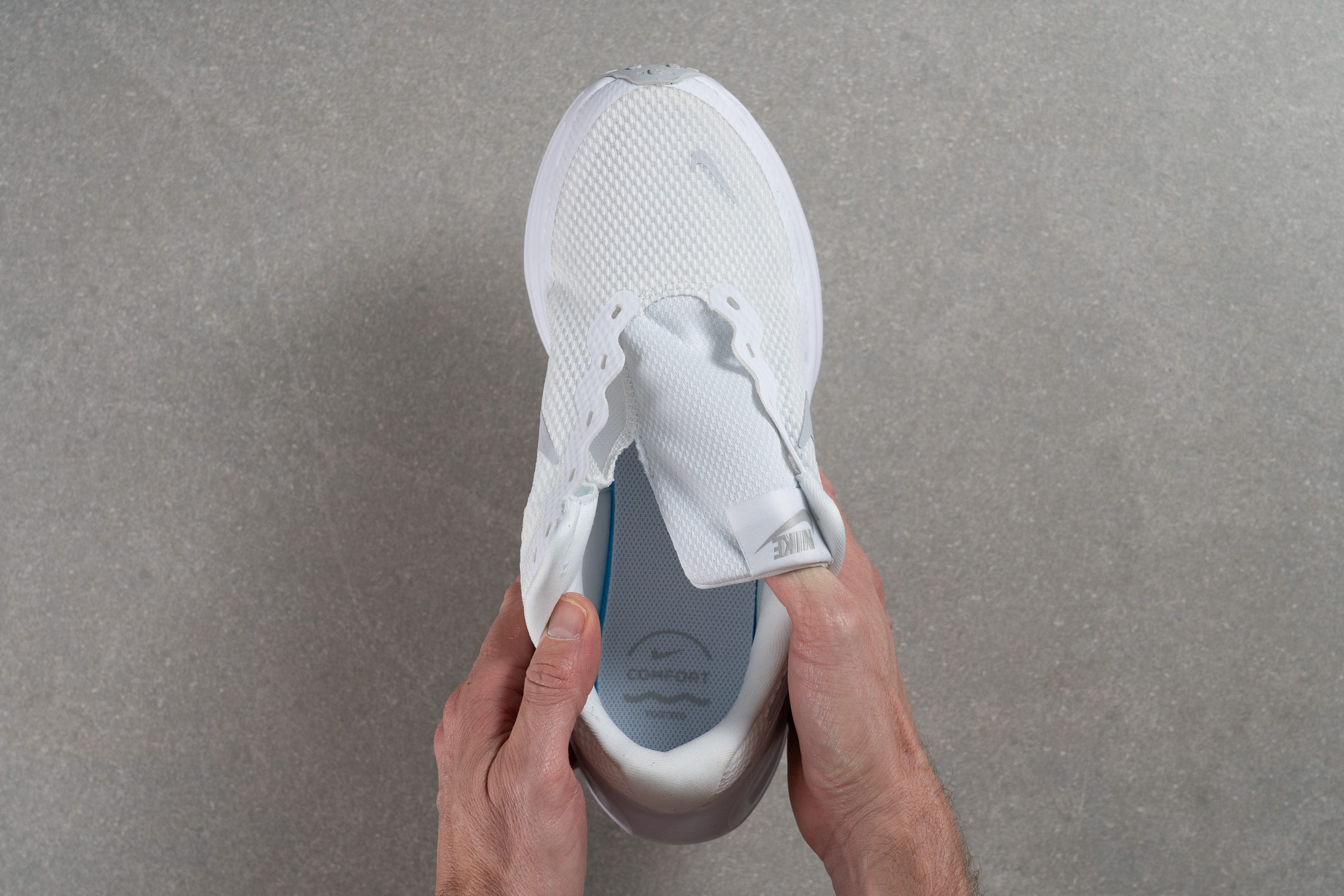
| Revolution 8 | Both sides (full) |
Price
The biggest appeal of the Revolution 8 is its affordable price, especially compared to top-selling daily trainers. With the improved energy return, it now feels like a real option if you’re not aiming for long-distance runs.
| Revolution 8 | $70 |
Heel tab
The Nike Revolution 8 lacks a finger-loop tab, but features a subtle extension that curves slightly outward and it's lightly padded for comfort.
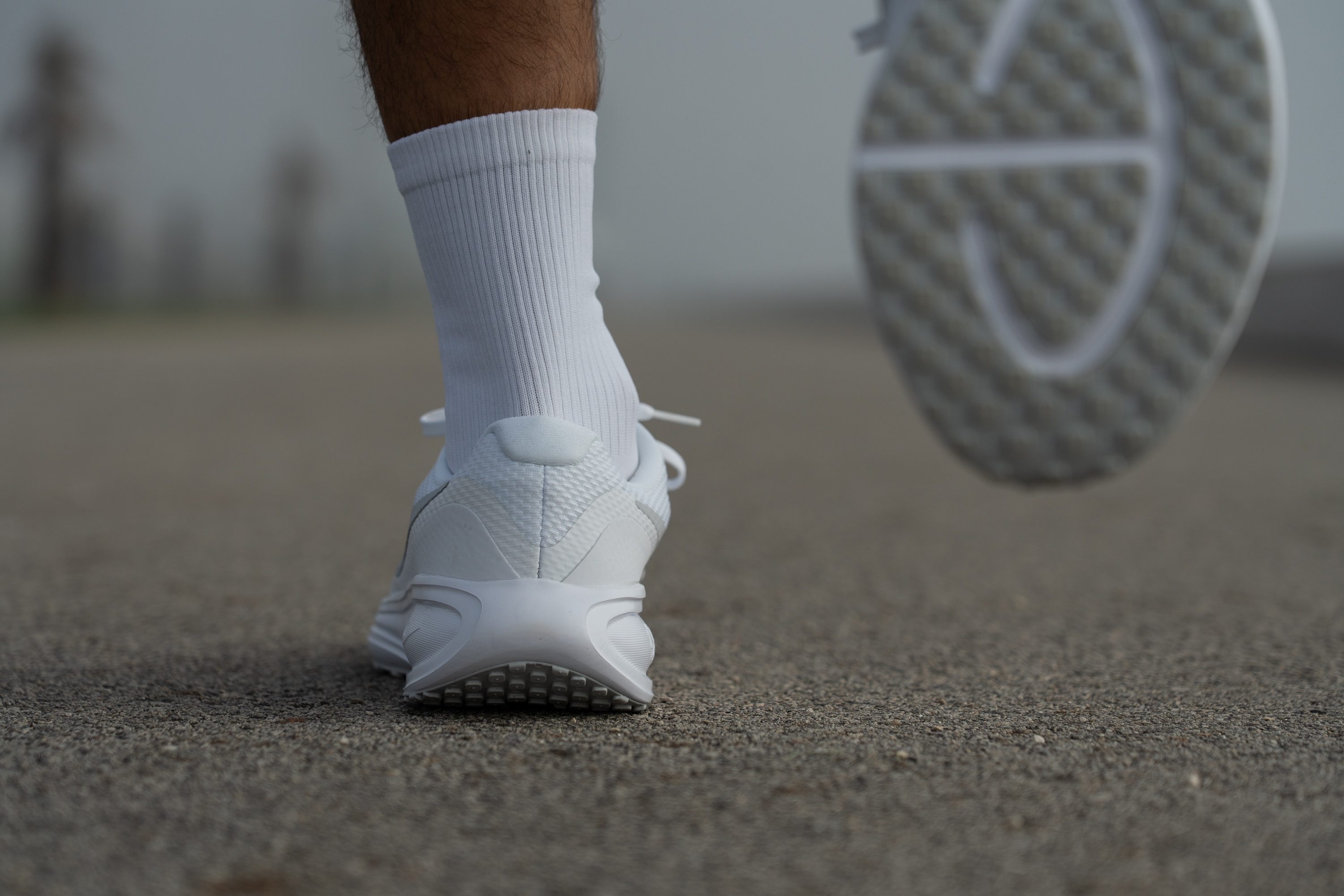
| Revolution 8 | None |

